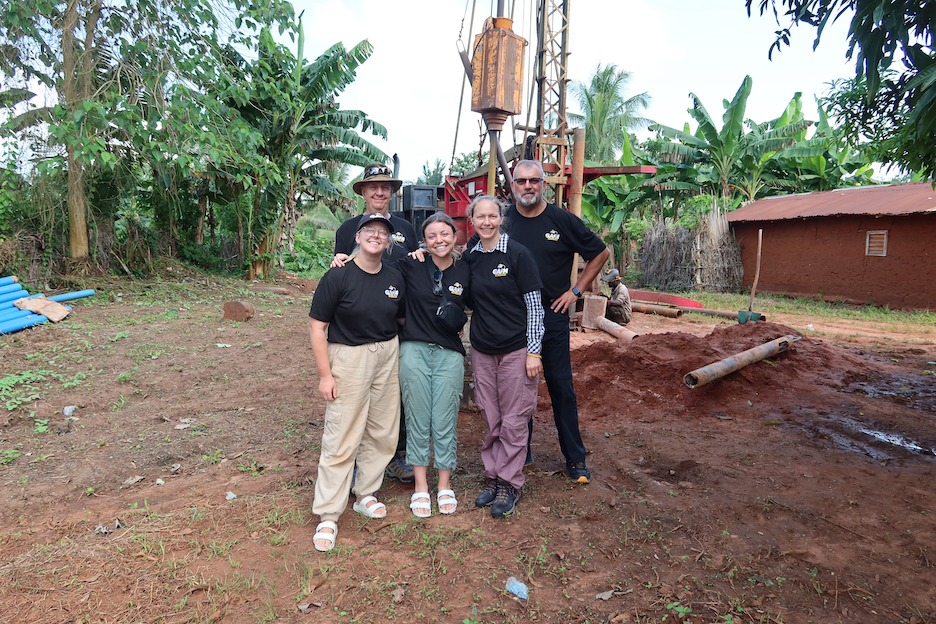This past October, a LIFE team of five participants flew to Benin for a 10 day trip to experience the work of GAiN’s Water for Life Initiative (WFLI). The team immersed themselves in the hands-on work of the well process while engaging with the day-to-day activities and rhythms of village culture. The blend of manual labor, relationship building with villagers and time spent with the GAiN Benin staff all contributed to a deeper understanding and appreciation for what the Lord is doing through the water program.
During a typical day on the LIFE trip, the morning kicked off with team devotions and a quick breakfast before driving for about two hours into the villages. Once there, team members were enveloped in a series of activities, ranging from laying a cement pad to exploring the village to chatting with locals about how life has changed since receiving a well from GAiN. The GAiN Benin team served as guides throughout the trip, answering questions and demonstrating how different parts of the well process was done.
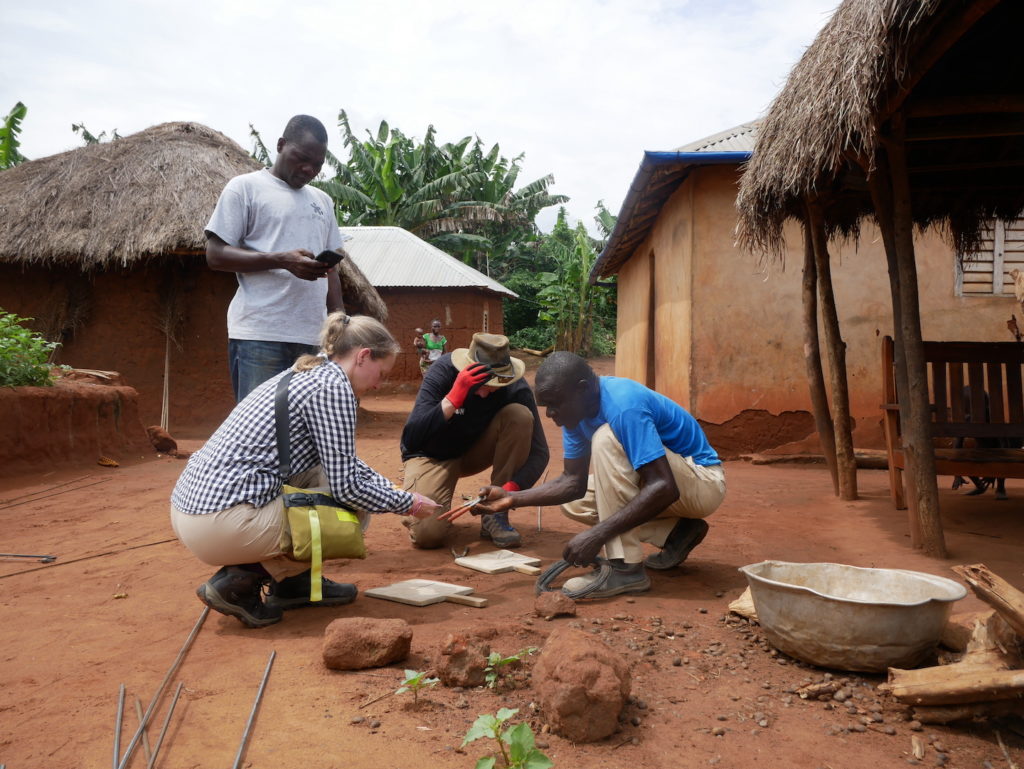
“I found it staggering that the Benin GAiN team would go through all that hard work disguised as water suppliers while they really want to win souls for Jesus,” said Marius Schultz, a member of the LIFE team. “That is being disciples of Jesus on a different level!”
Frikkie Greyling, leader of the team, added, ““I was impressed with the dedication of the GAiN Benin team working under very difficult circumstances. They were always smiling.”
One of the greatest joys of the trip was witnessing a village receive clean water for the first time. All the children stayed home from school that day to watch as the GAiN Benin team put the finishing touches on the well, flushing out sand and installing the pipes. As big bursts of water exploded into the air, people gasped and women ran forward to fill their metal bowls.
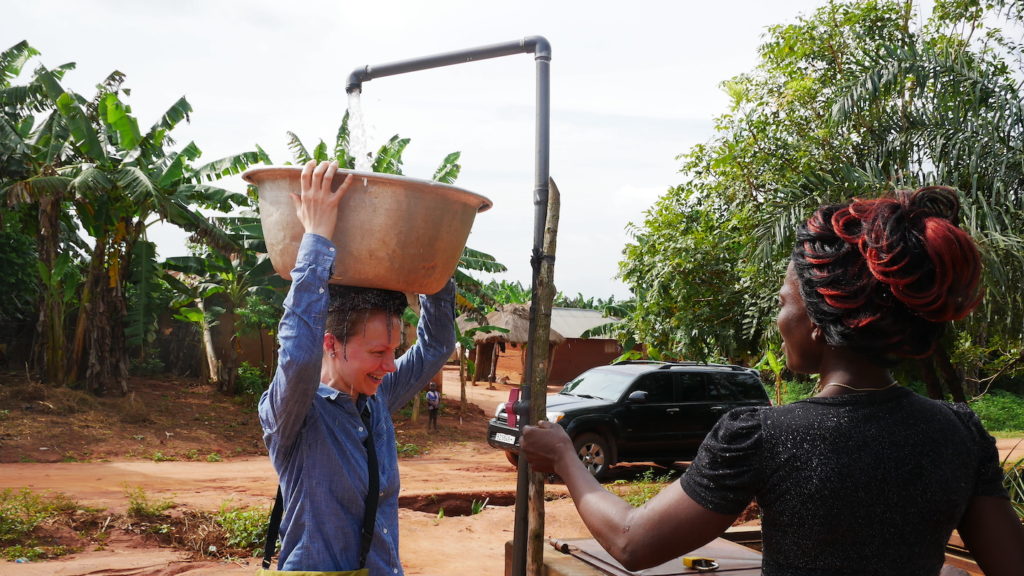
“The air was thick with anticipation and excitement,” said Sarah Rhea, a member of the LIFE team. “One woman we talked to said they used to walk two hours round trip to get water! Now there’s perfectly clean water right in the middle of their village. It’s such a relief for them.”
Later on that night, DRIME performed and the JESUS Film was shown, leading many people to give their hearts to the Lord. As people came forward to receive Christ, the pastor of the local church and members of the DRIME and GAiN Benin team prayed for and chatted with villagers about the gospel. Everyone was invited to attend the local church the following Sunday to continue the conversation of what becoming a Christian means.
“The GAiN Benin team are so servant hearted and gospel motivated,” team member Sarah Overmyer shared. Seeing how the Benin team connected with members of the village so intentionally revealed GAiN’s heart to show the love and tenderness of Christ to all.
Another key takeaway of the trip was forming relationships and memories with other members of the LIFE team. Going through long hot days and having the chance to lean on one another and debrief at the close of each day was a meaningful and helpful routine for the group.
“One of my highlights was definitely the team. We supported each other well and had a lot of fun together!” Sarah Overmyer said.
The team all agreed there is nothing like witnessing the work of GAiN in person. From the beginning stages of seeing the drilling rig pound into the ground all the way to the moment when crystal clear water flows out of the well’s spout, there is an undeniable sense of clarity and awe.
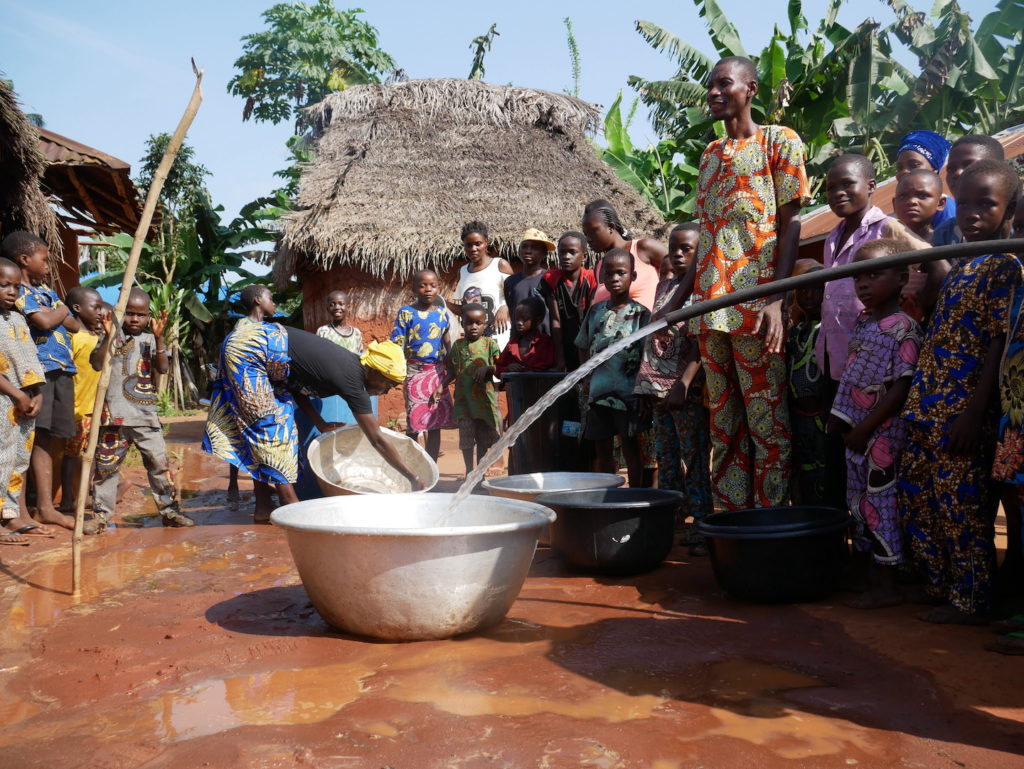
“You realize how stunning the gift of clean water really is,” Sarah Rhea shared. “It changes everything – health, relationships, how people spend their time. It finally clicks when you are there on the ground, watching it all happen.”
February 13
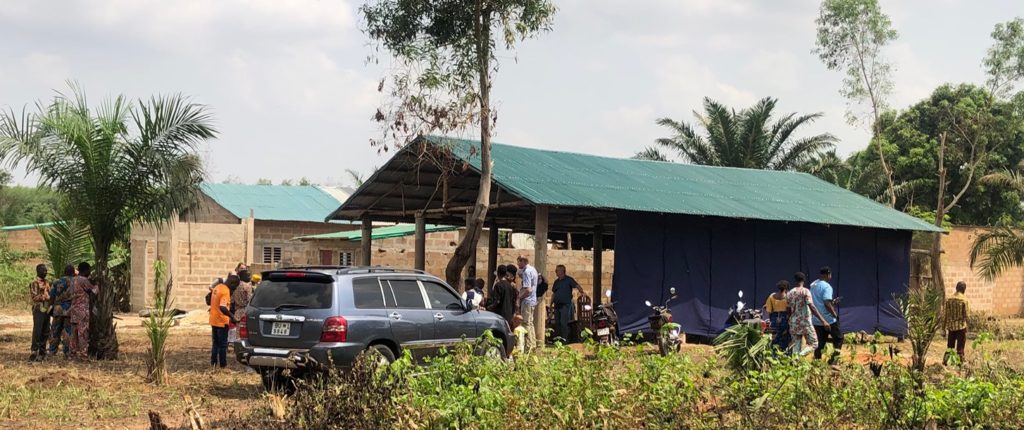
The LIFE Team had a bit of surprise this morning. The schedule had the team attending a church service with Mike preaching but no location. The surprise was that the service was at the church they helped build on Friday! On Friday, the team had commented, “Wouldn’t it be fun to join them for the first service in the new building?” But they thought they were scheduled elsewhere and did not know if the work would continue on Saturday.

What a treat to be in this community again for this special day of enjoying the start of a new chapter and celebrating God’s provision of a new meeting place.
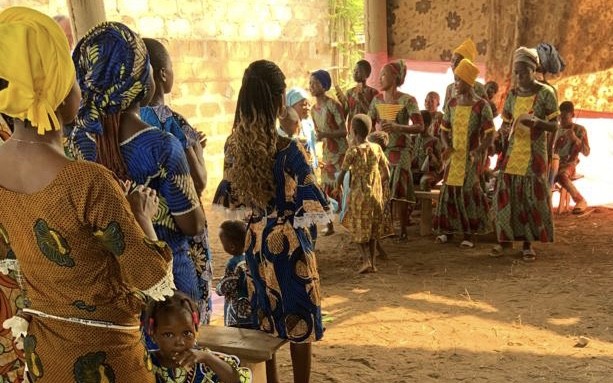
This all started with a well, then a church plant and now a new building to serve the community. It is clear they have out grown their 15×20 ft church building!
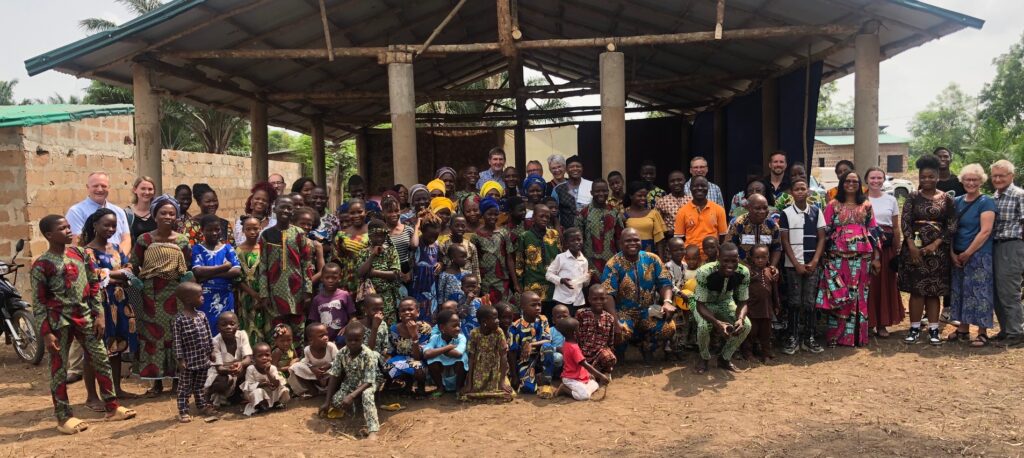
This chapter is closing for the LIFE Team, and their trip home starts tonight. It is amazing how they come in as strangers and end up so close after just ten days together. The intensity of the experience pressed all of the team toward a significance level of transparency. Their experience has been filled with lots of common events, but each person is taking home a unique perspective based on their own personal engagement with this trip. One person commented, “My heart has changed.”
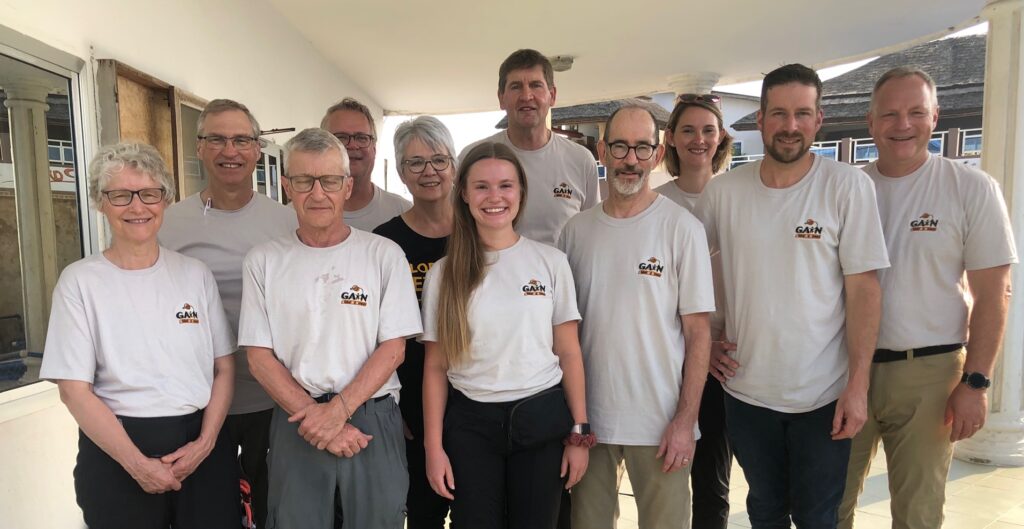
They were so incredibly thankful to God and everyone that helped support this trip to make it possible!
February 12
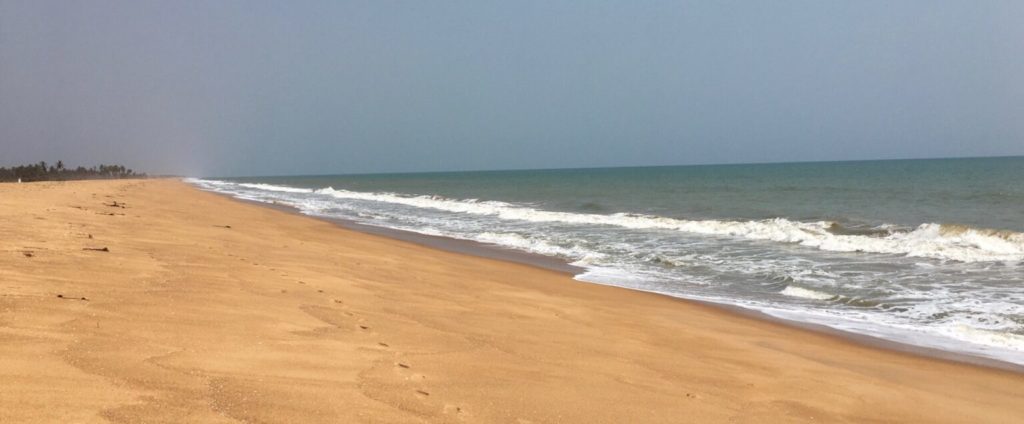
Today was a R&R day. The LIFE Team played tourist in the morning and went shopping in the afternoon. Their tourist experience was a guided tour of the four km Slave Road that leads from Ouidah to the ocean shore, pictured above, where over one million slaves were loaded on boats headed for Europe, North and South America.
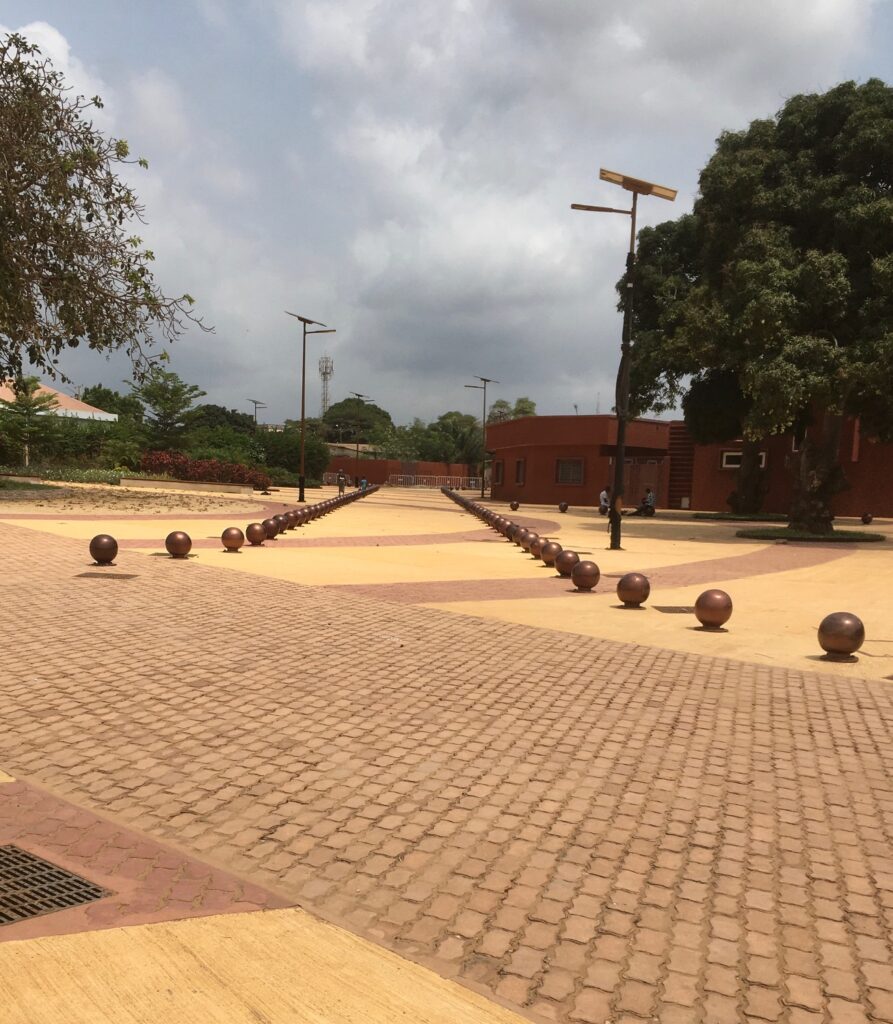
The Slave Road consists of six main stages, including Plaza Chacha, where enslaved people who arrived were auctioned, and the “Tree of Oblivion,” which was replanted in 1992 and commemorates the tree where men went around nine times and women seven so that, in accordance with the voodoo tradition, they would forget their origin.
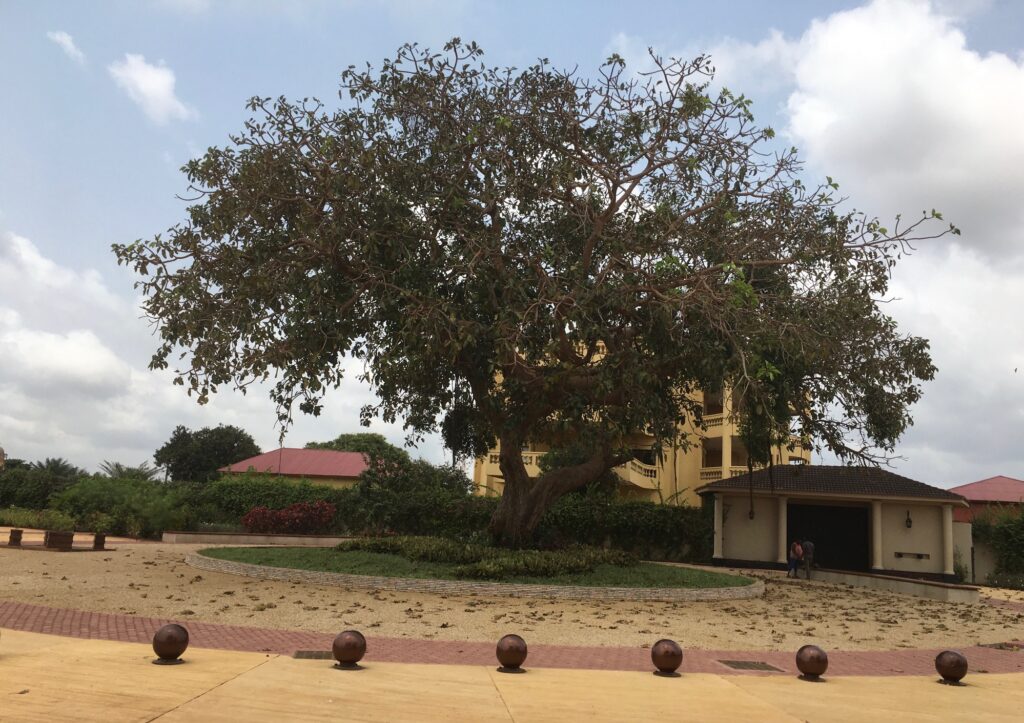
The “Zomai House,” where slaves waited for the arrival of the so-called slave ships and the “Memorial of Zoungbodji,” the mass grave where dead slaves were thrown.
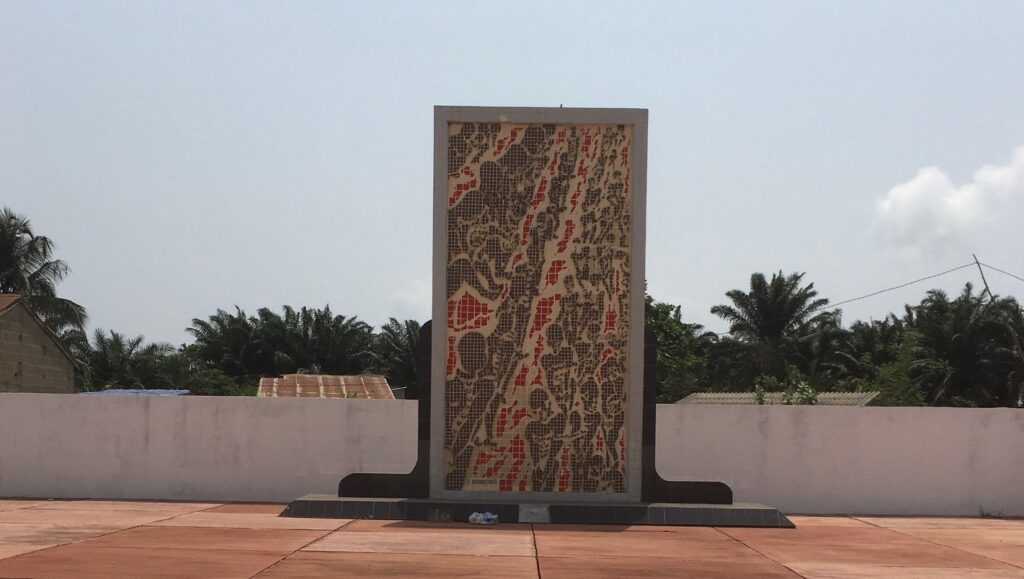
Here is the “Tree of Return” where men and women would go around three times, in accordance with the voodoo tradition, so that their souls return to their land of origin after their death.
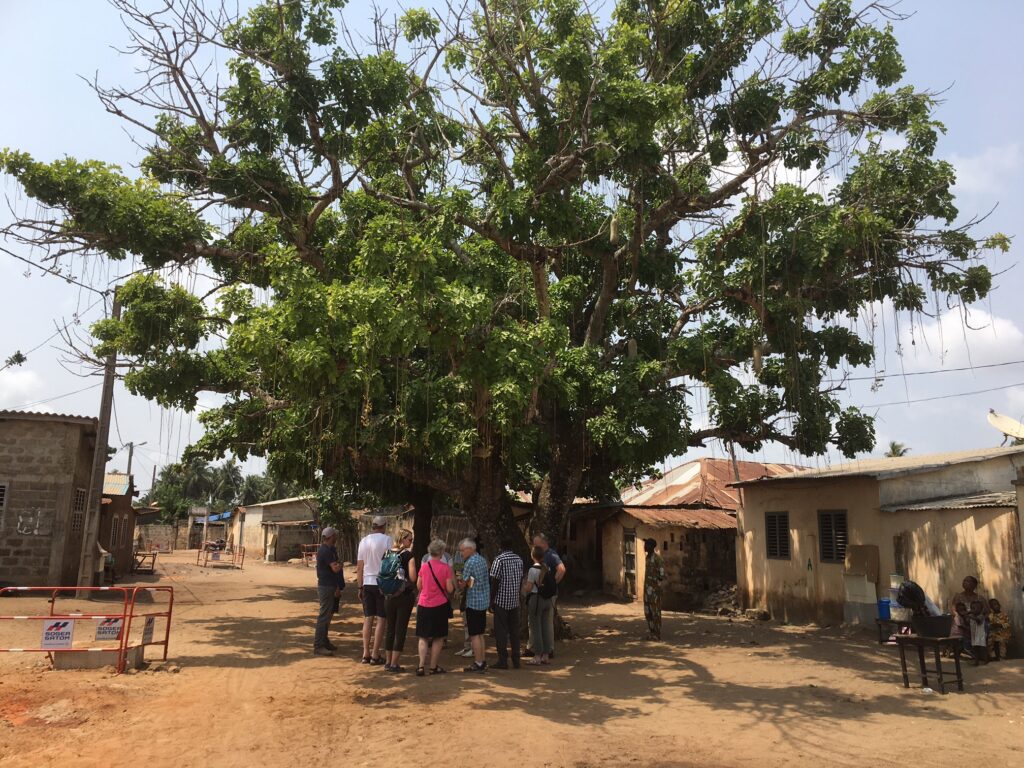
The route ends where the ships used to arrive, today symbolized with the artistic work “The Door of No Return”. Even though we only walked about one km of the route, it was gripping to literally walk in the steps of over one million people who faced the brutal reality of the slave trade.
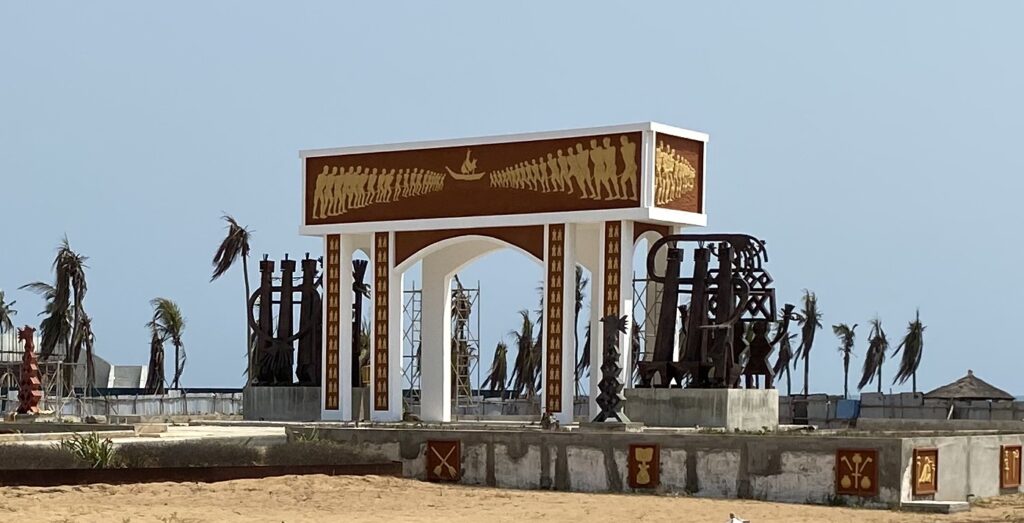
Our lunch was just a short distance from “The Door of No Return” with a view of the beach where the slaves took their final steps on the soil of their homeland.
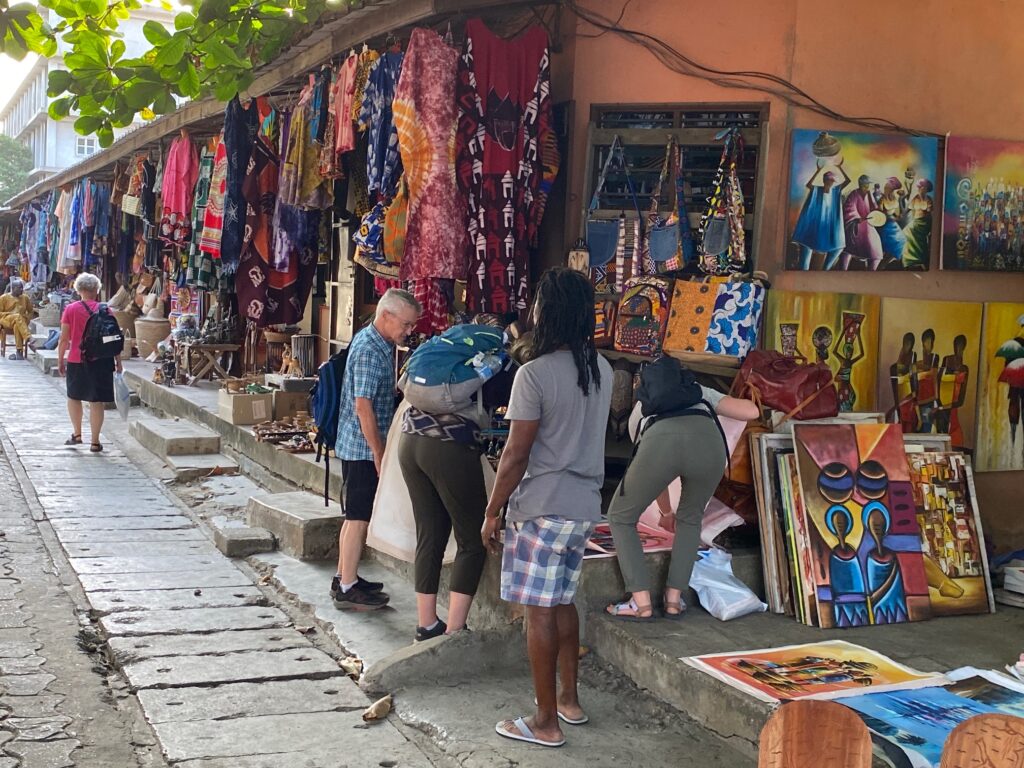
After lunch we engaged in a favorite past time of many… shopping.
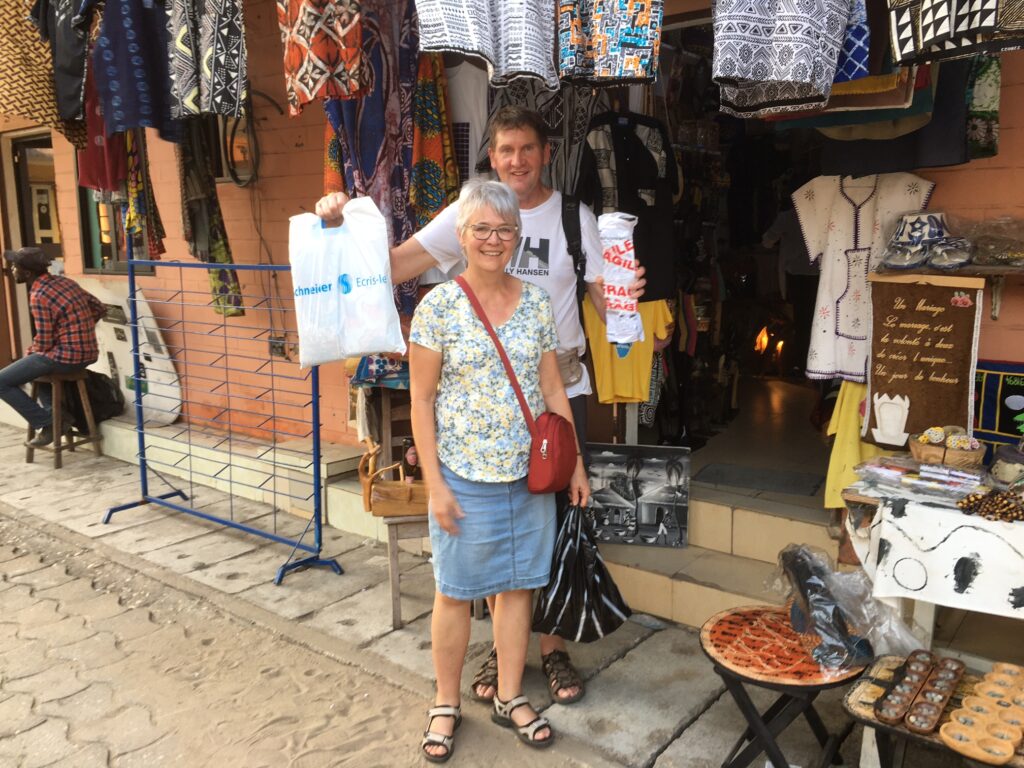
February 11
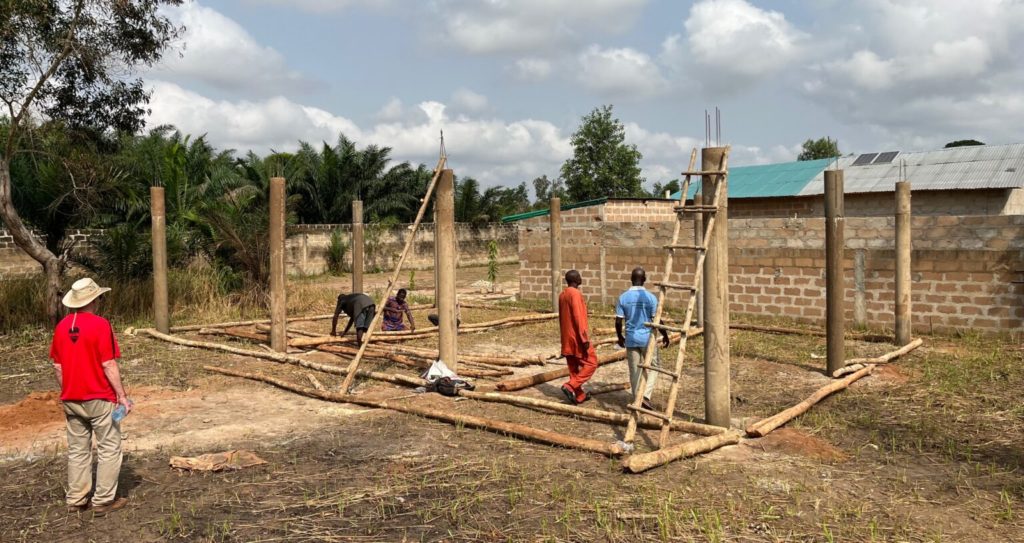
The LIFE Team’s day was spent in a village where they provided their unskilled labour to the construction team of three that was building a new church. The church was planted in 2018 after a GAiN well was drilled in that same year, and has grown to 25 adults and 35 children. They have outgrown their current 15 x 20 ft building.
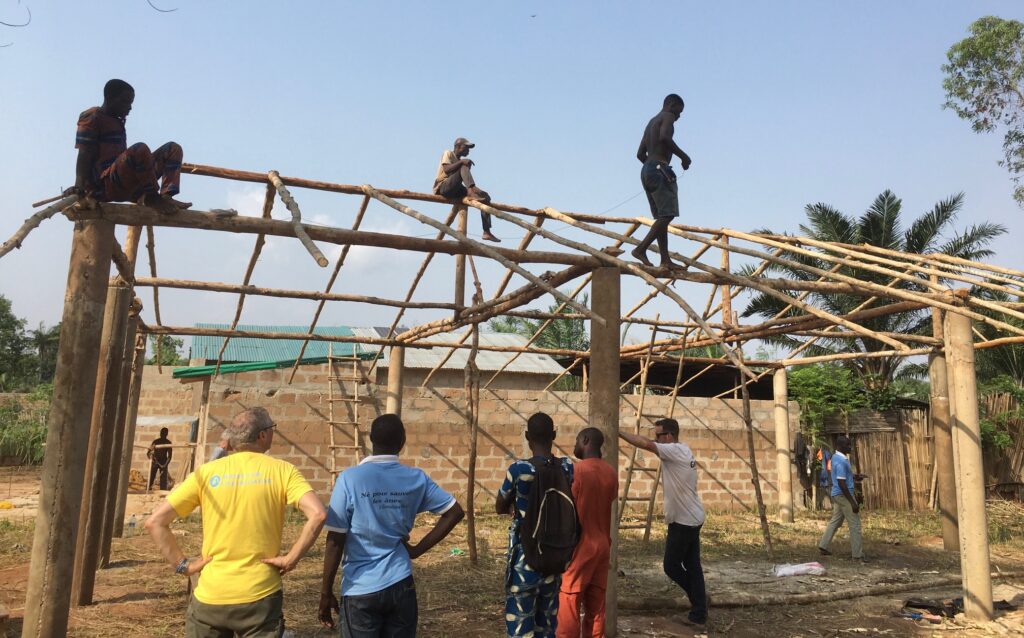
The new church is 25 x 50 ft. The cement pillars that will support the roof were poured on Tuesday. The team’s task for the day was to help construct rafters and if they had time, the roof of metal sheets. All the work is being done with hand tools, no power tools. The framing material is teak poles, no milled lumber. The floor will be sand and the walls will be make by the church members from the branches of palm trees. This simple structure costs about $2800 and has been sponsored by a Canadian donor.
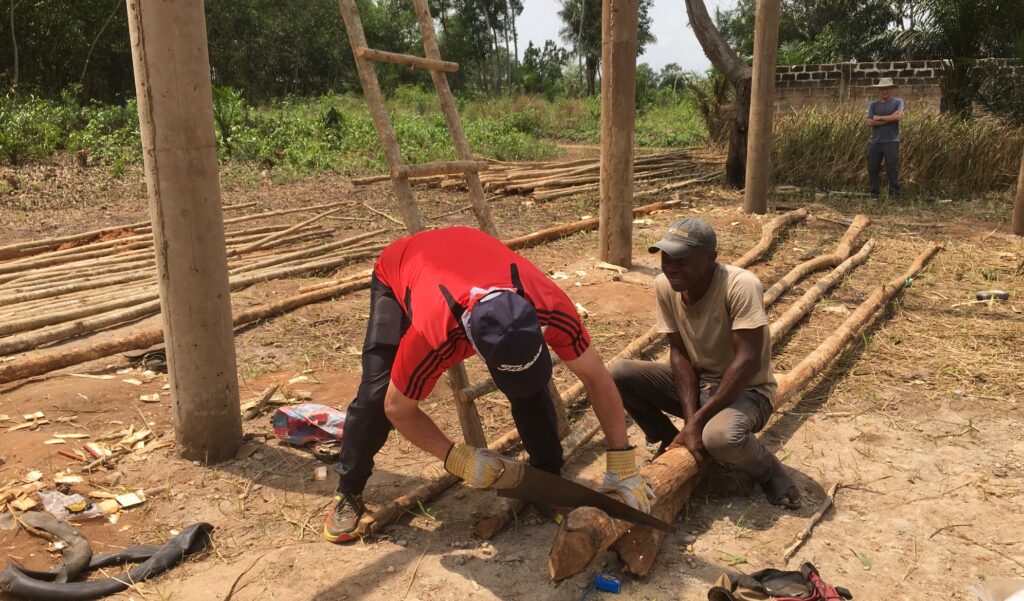
Take a look at this shot of one of the workers. What do you notice? Bare feet and look at the tool he’s using.
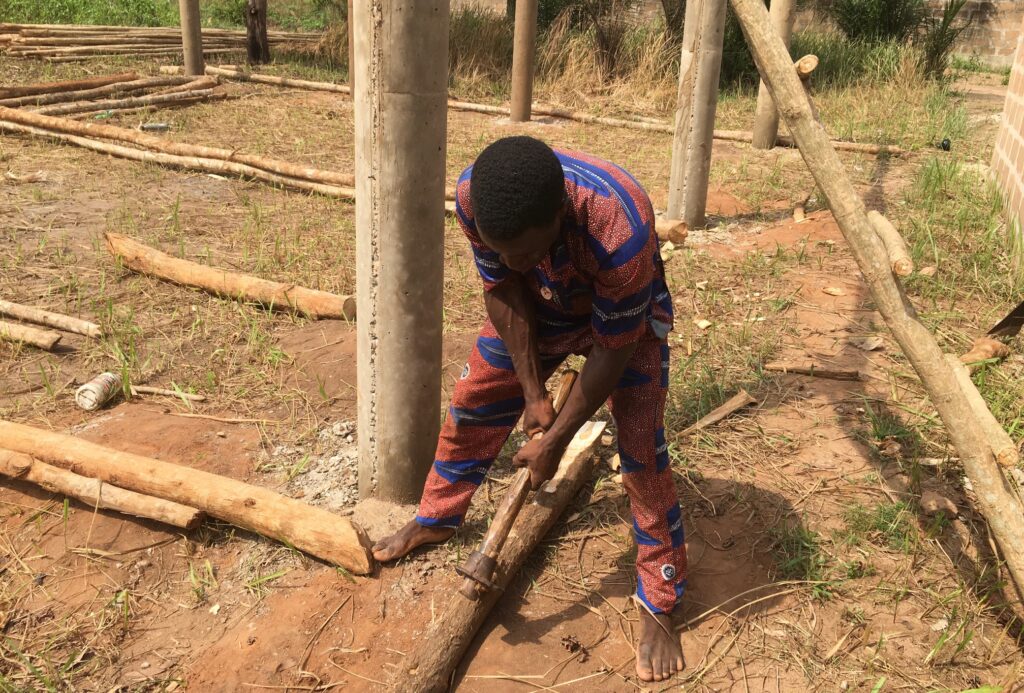
The women on the LIFE Team were invited to visit in the homes of two of the church members. One of the ladies operated a small village shop out of her home. Both provided warm hospitality. This is by far the most developed village we have visited.
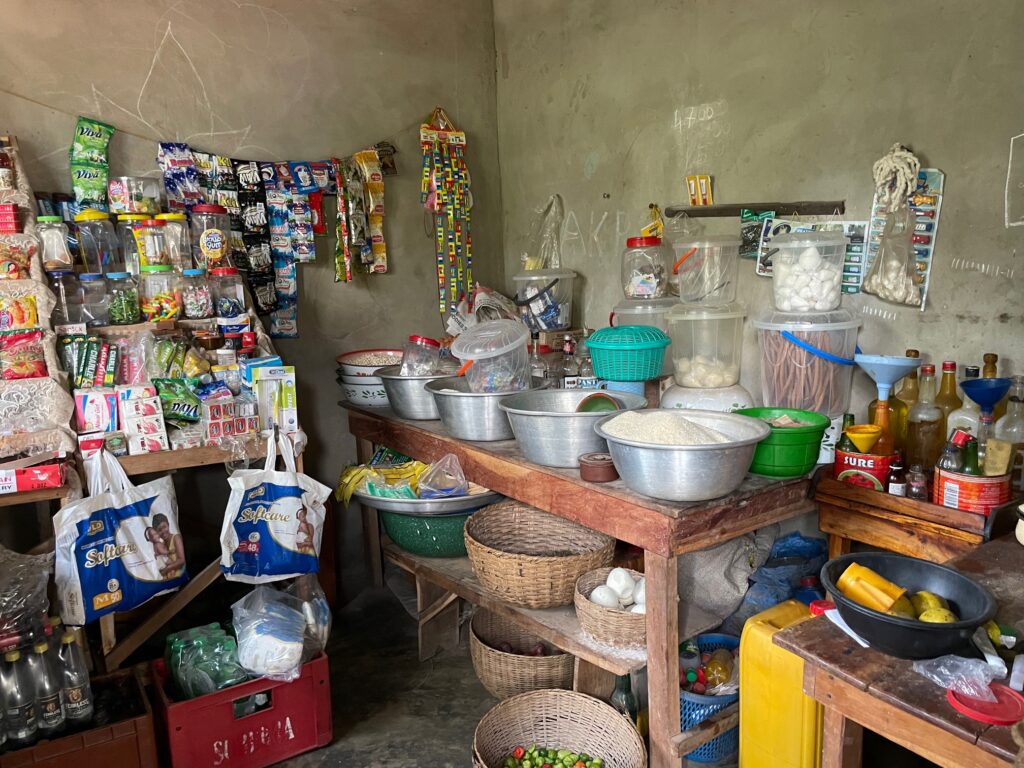
The team’s role was very much of “carpenter’s helpers”. They helped cut and carry poles and did a lot of observing. Maybe that was a good thing because it was 32 degrees with no wind. It was amazing to see how very creative the workers are with the material they have! The goal of getting all the framing completed for the roof was not accomplished. With one more day of work the roof will be complete. Then the church members will finish the walls and sand floor.
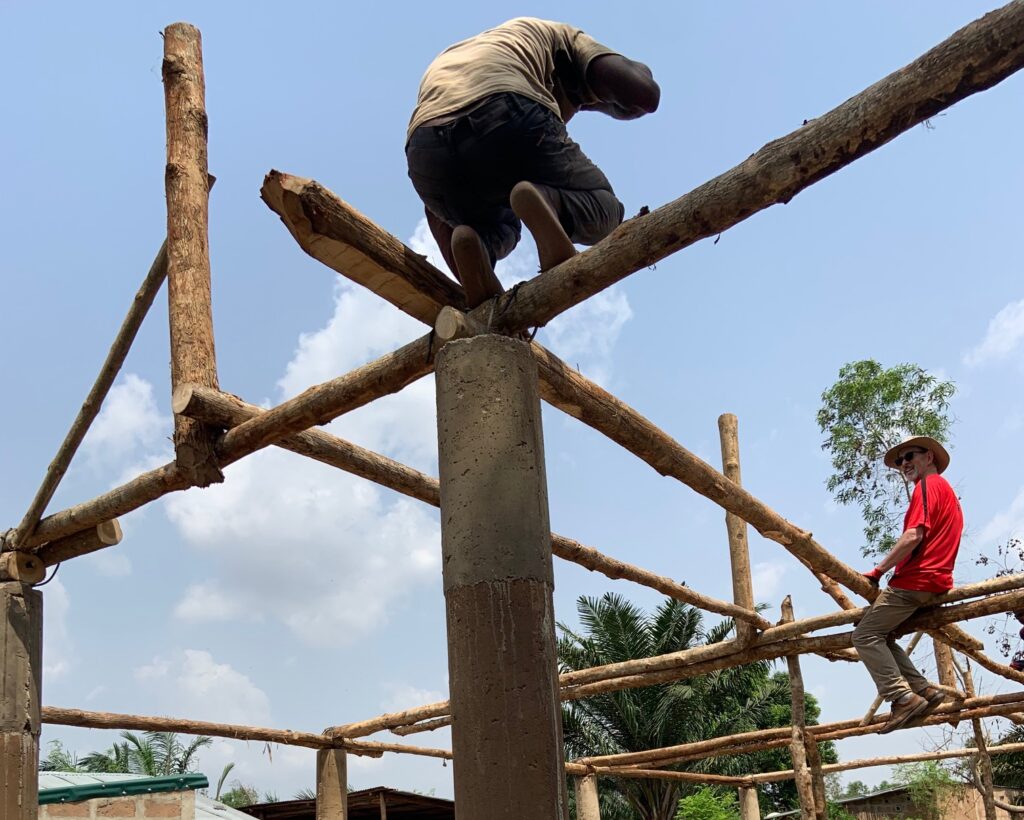
Monique helped a woman collect fire wood. The team trusted this new building will create space for growth for this local church.
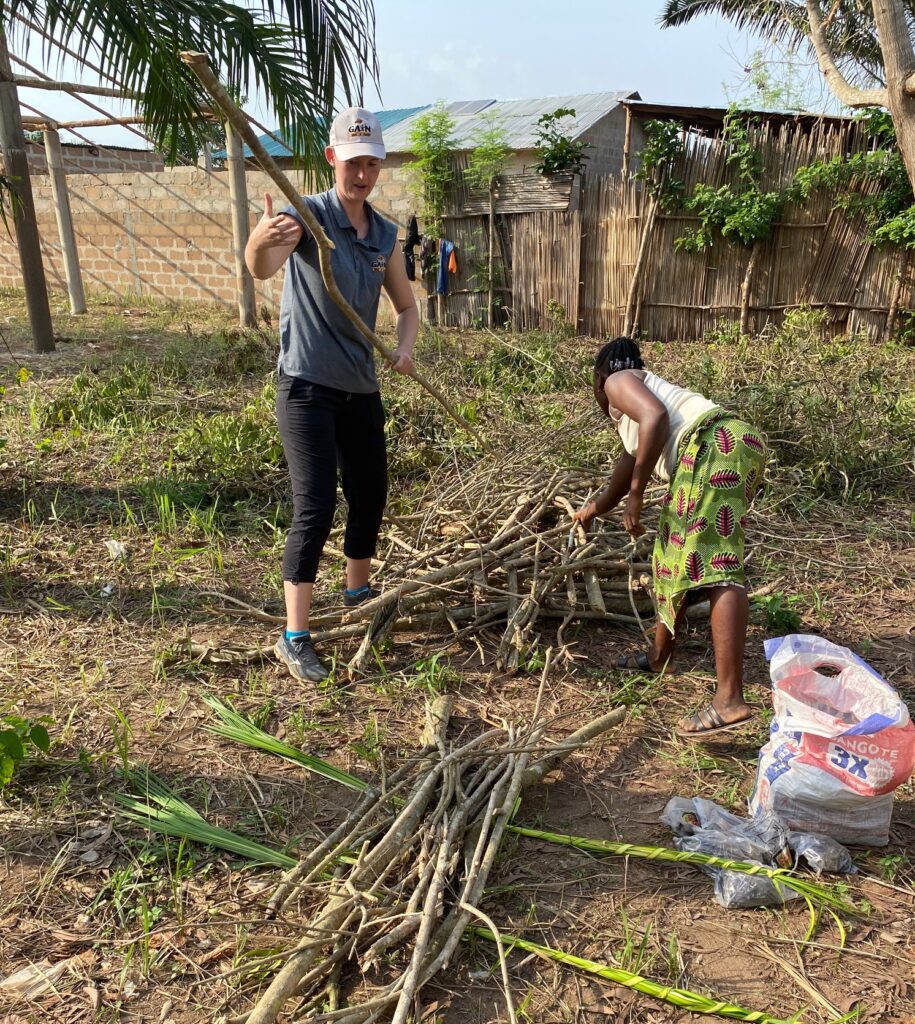
What a satisfying experience to help and also observe the life of this community around the LIFE Team. What a great team!
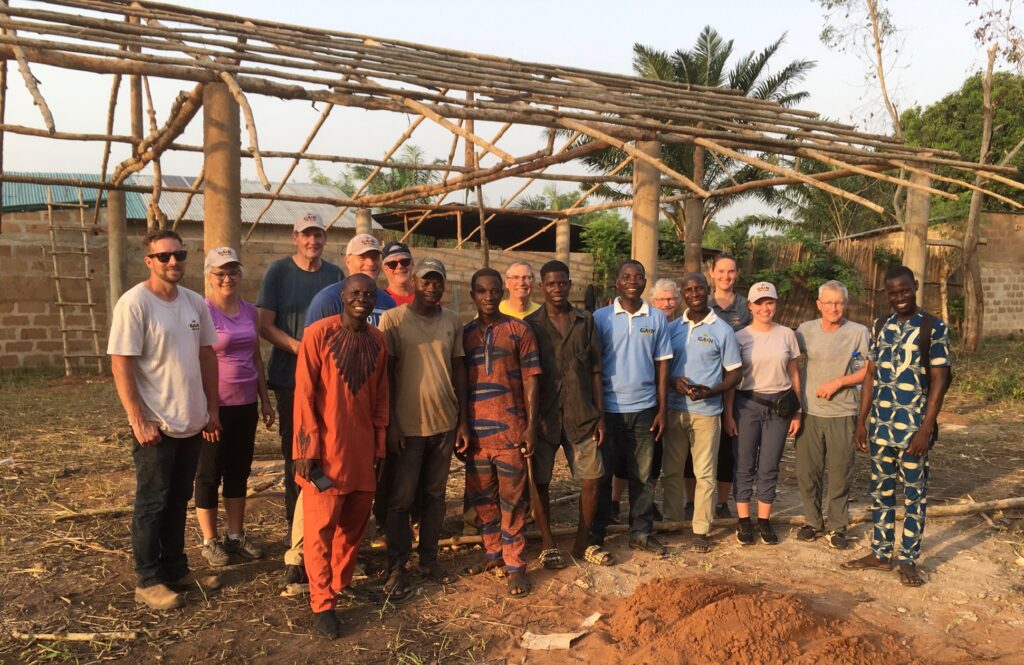
February 10
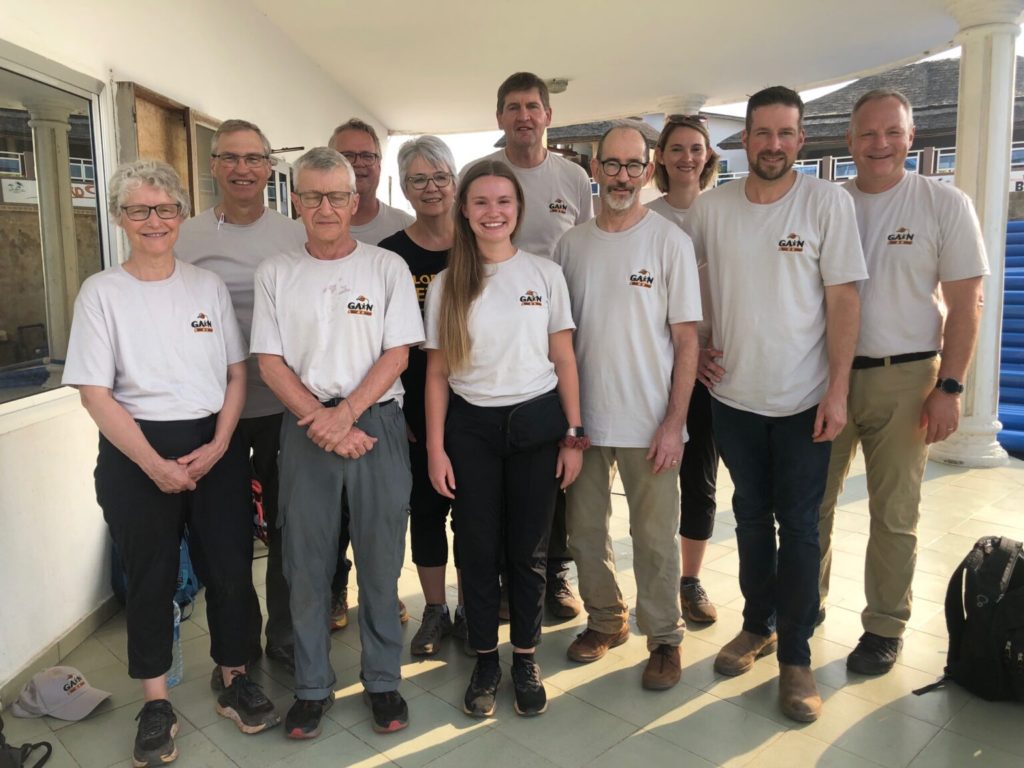
It was GAiN t-shirt day. The arrival gift from GAiN Canada was a t-shirt and a hat. We looked so clean, but that didn’t last long!
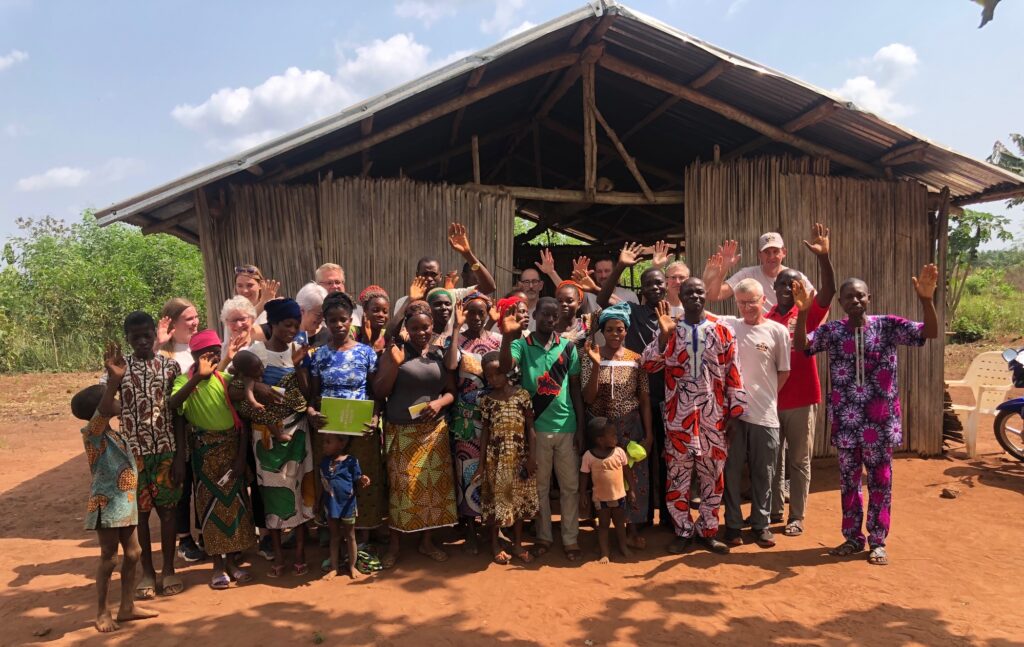
The team’s morning departure was delayed because of mechanical problems with one of the cars. Once that was addressed, they headed out to observe a training session organized to equip church members in the area where they were last night. They are called Action Groups and are made up of volunteers who will provide encouragement and help to the men and women who indicated a desire to follow Jesus. Mike and Rob are very familiar with the content of the training because it is similar to resources they used with students when they served on campuses in Canada. It is so interesting to see how small children accompany their mothers and seem to be content.

Lunch was a road side experience. The LIFE Team parked beside a village church. When participants asked about the church, it was clear there was no connection but we were assured it was okay to stop and use the benches for their lunch.
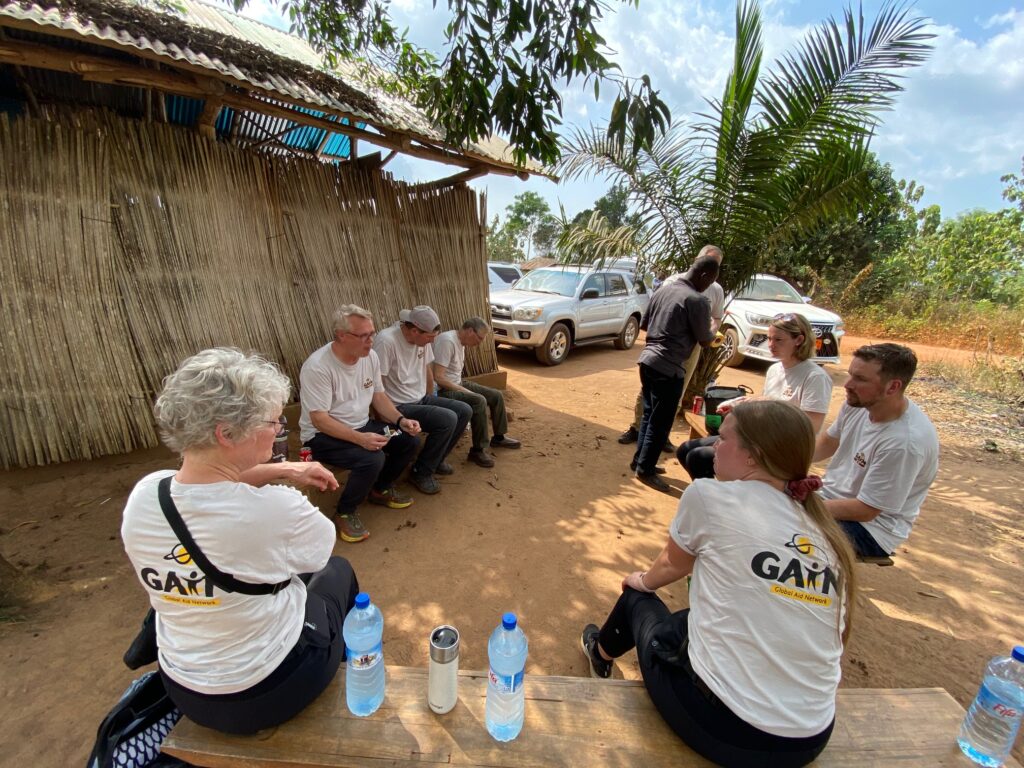
The women decided to do some exploring. They said it was to check out the vegetation in the area, which may have been code for finding an appropriate spot for a bathroom break.
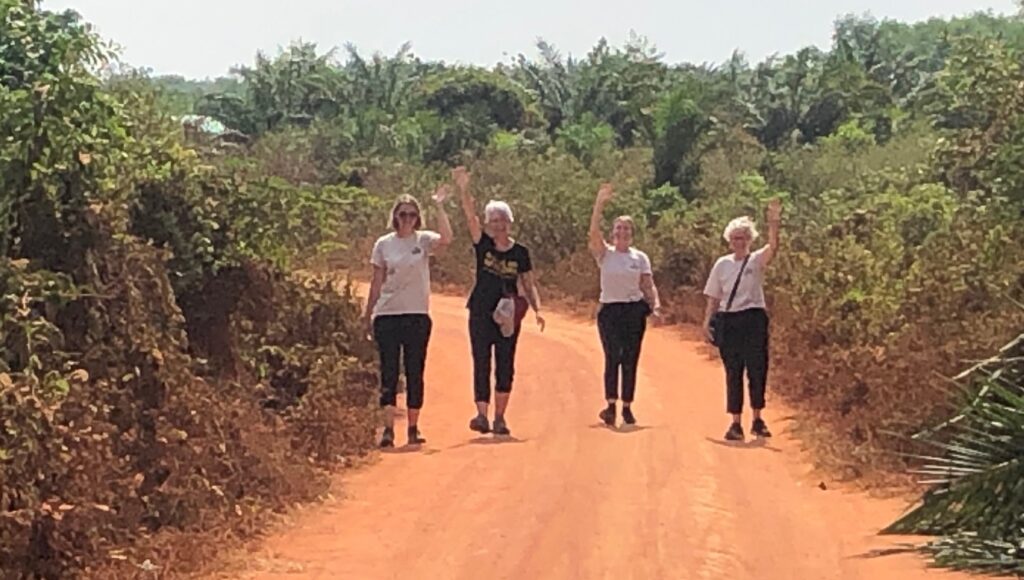
The next stop was the home of a pastor who helps coordinate the activity and training in this area. GAiN is doing a pilot project to help support village pastors through a “chicken project” for economic development. A Canadian chicken farmer is providing the resources for this pilot in three locations. In a short time, 100 chickens will arrive at their new home. Here is a shot of the new chicken coup and the pastor with his family.
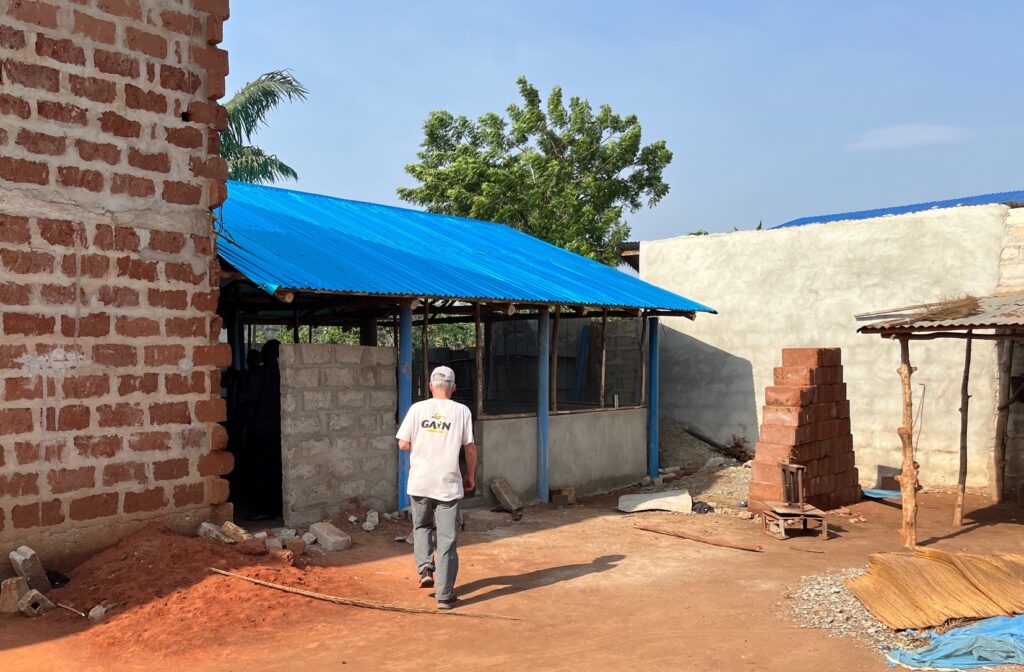
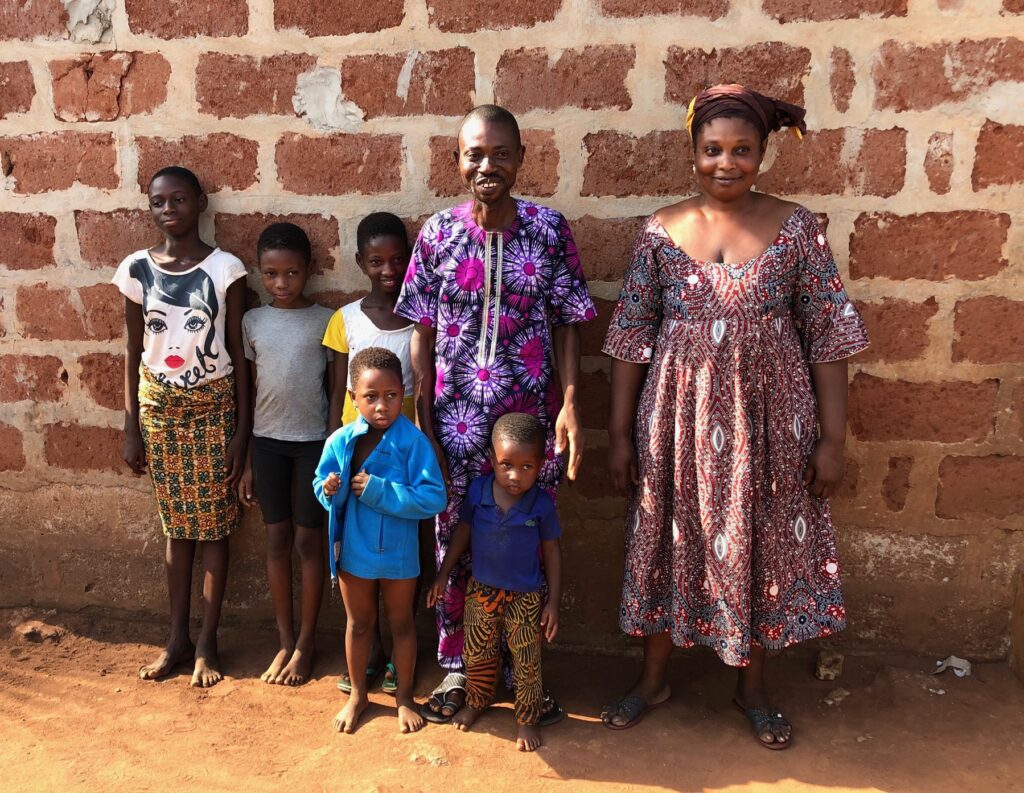
After dinner and the team debrief from the day, the word ice cream was heard! Within minutes, a GAiN staff member volunteered to take the team to a local ice cream shop. Looks good doesn’t it? What a great way to end the day.
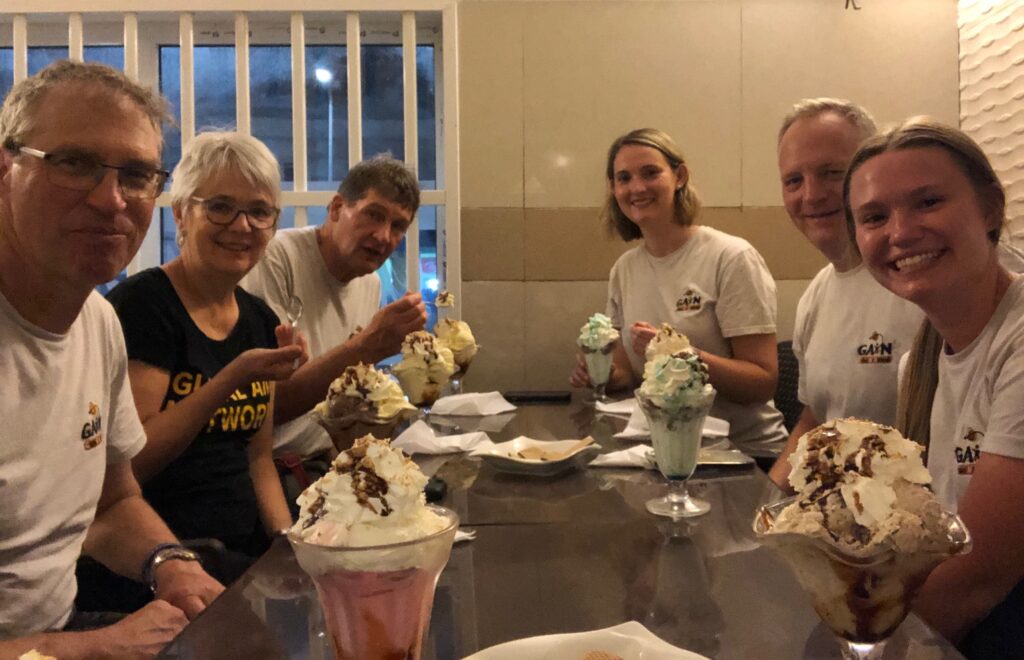
February 9

The GAiN office is very near the ocean. In fact, we can see it from the rooftop meeting area. Our schedule has been so full, today was the first opportunity to walk on the beach. Even that visit was cut short because of an unexpected special visitor.
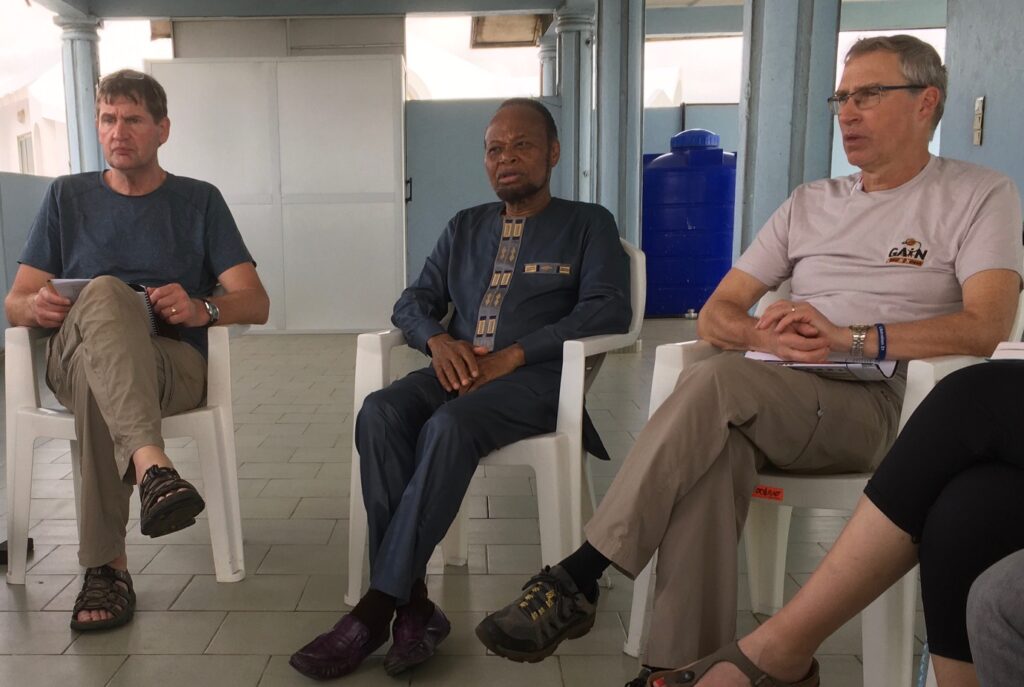
The former ambassador to Canada from Benin joined the team! Rob built a relationship with Mr. Loko through his work with the Christian Embassy in Ottawa and invited him to meet the team. Mr. Loko described his engagement with GAiN Canada and his assistance in launching GAiN Benin, which included the arrival of the first drilling rig. His involvement was a huge benefit to the ministry!
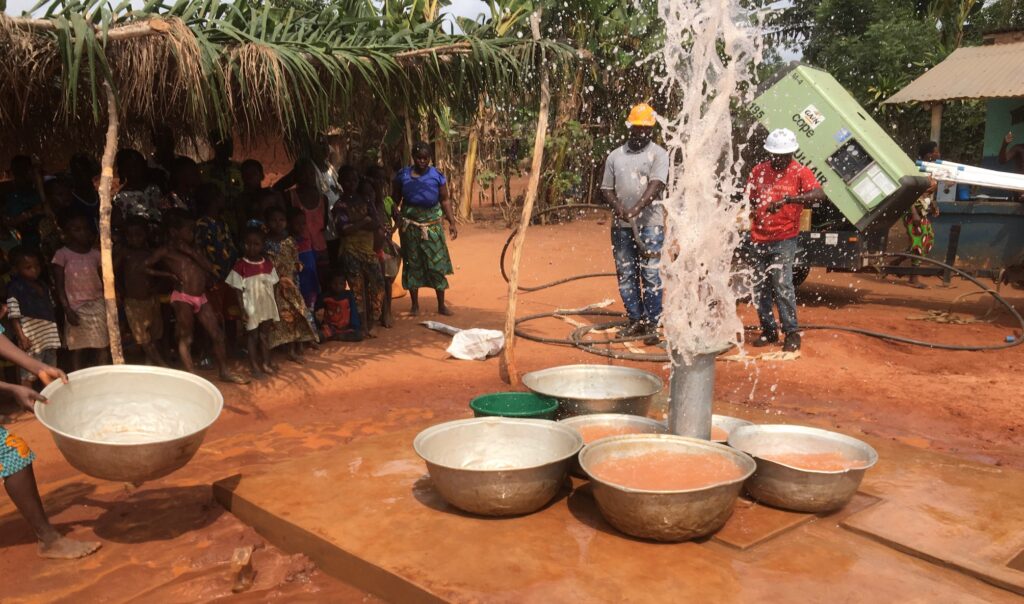
The afternoon and evening might be a highlight of the trip for some team members. They travelled to a village for the commissioning of a well. The well pad was poured on February 2, and today the well was flushed through the use of high-pressure air pumped into the well casing.
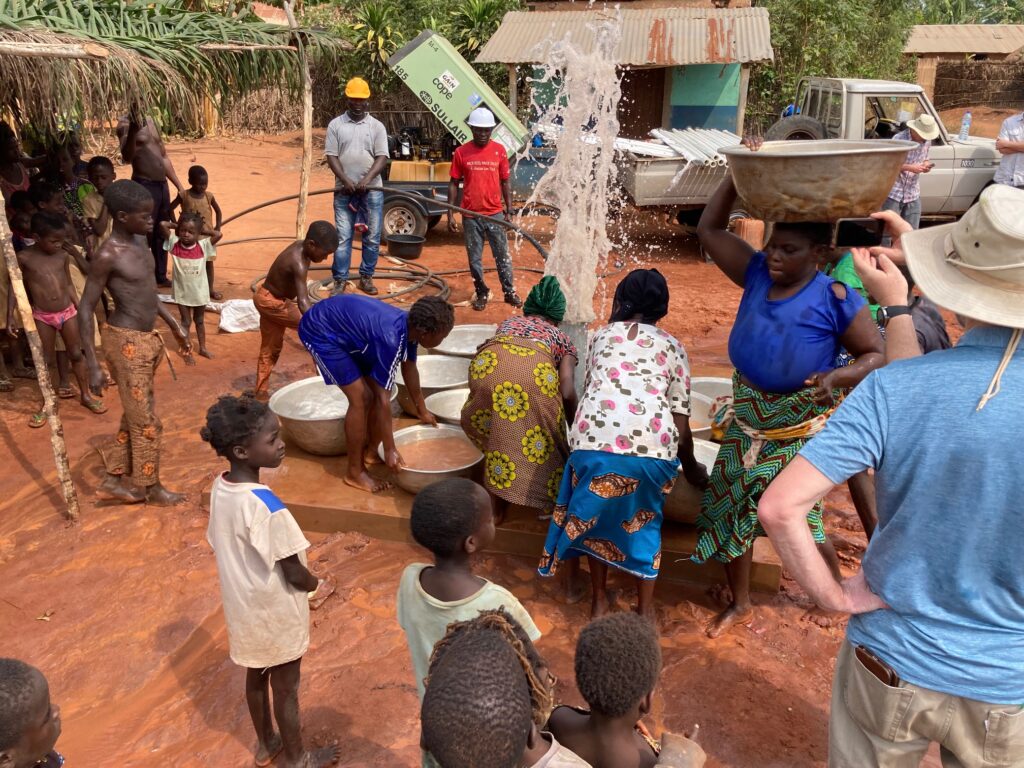
Near the end of this process, the villagers were given the green light to collect water. It was such a frenzy of excitement. The team couldn’t even imagine how they were processing water shooting out of a pipe in the ground! The women and children were trying to collect as much as possible.
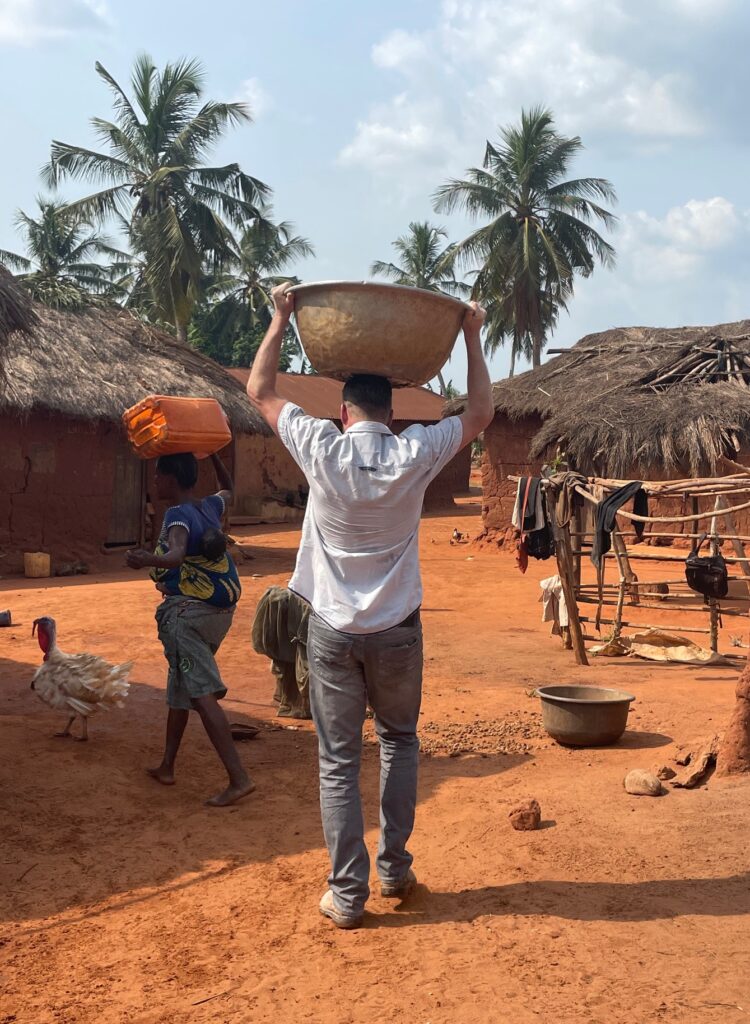
Inspired by the women and children, each of the team members attempted to carry a container of water on their heads to a villager’s home. This provided great entertainment and laughter for the locals. Some of the participants were not so good and got cooled off in the process.
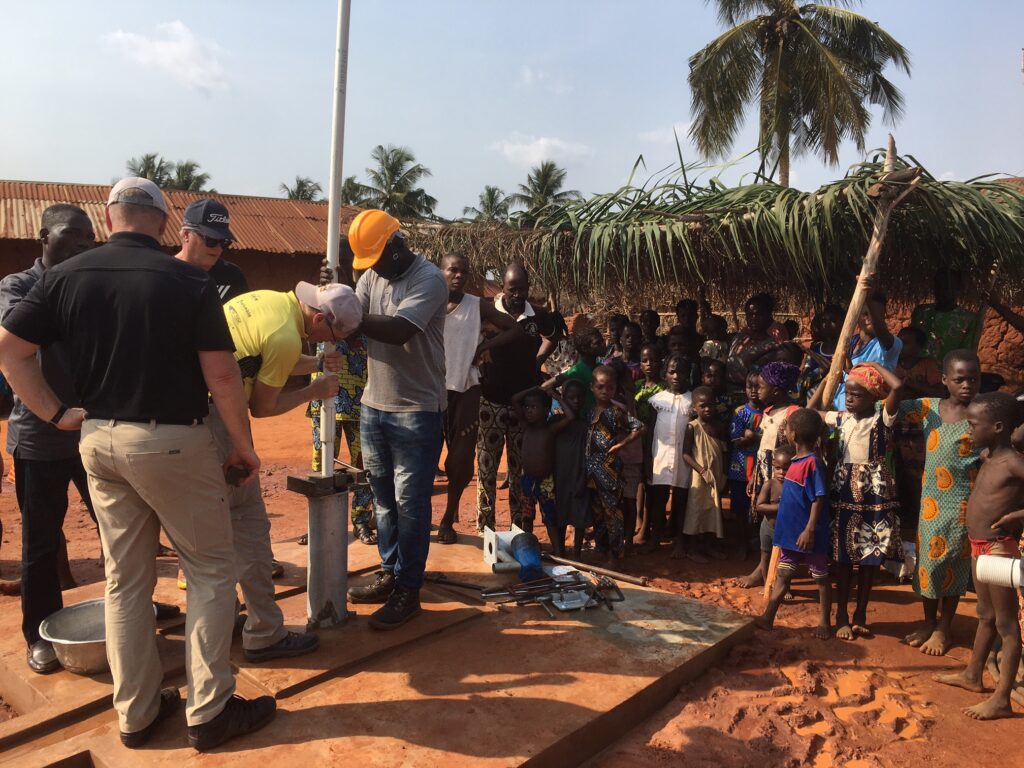
After the flush, bleach was added to the well casing. The PVC water tube was inserted into the casing and the pump was installed. Look at the smile on the face of this first woman to test the new pump.
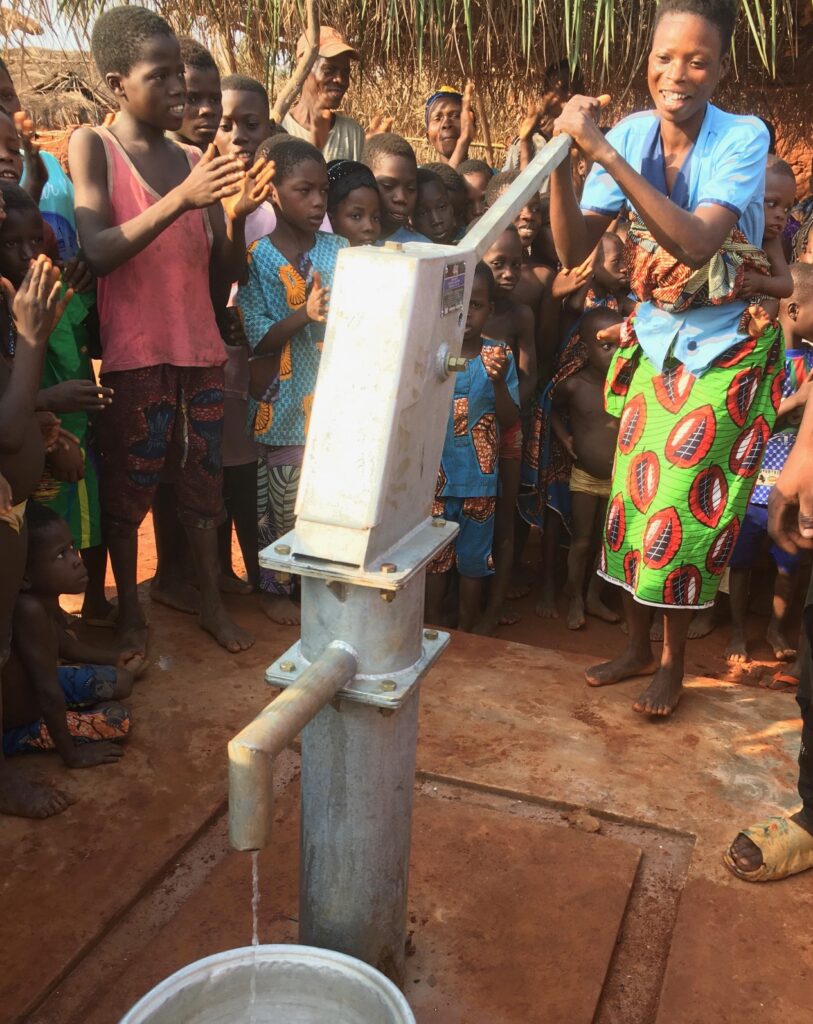
Following the completion of the pump installation, the GAiN team organized games for about 100 kids. Each child got some kind of special treat before the competition was over. Smiles everywhere!
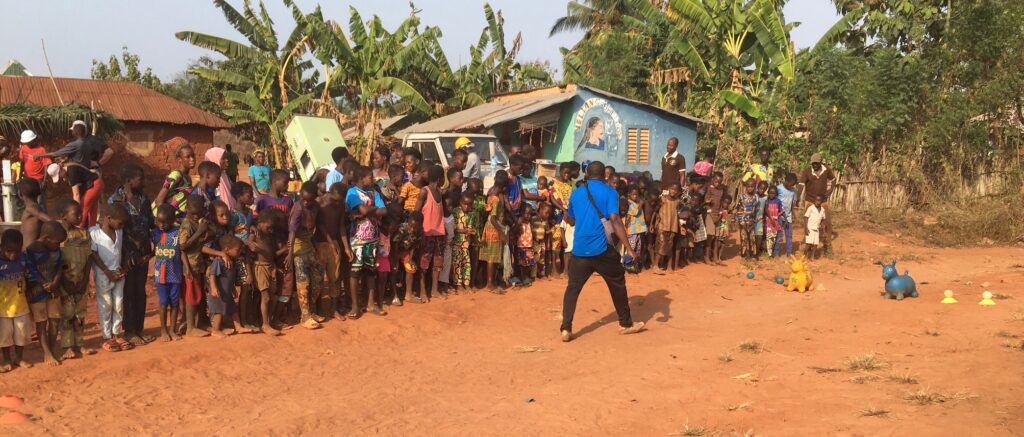
The DRIME team, using a combination of mime and drama, portrayed the story of Jesus’ love and sacrifice.
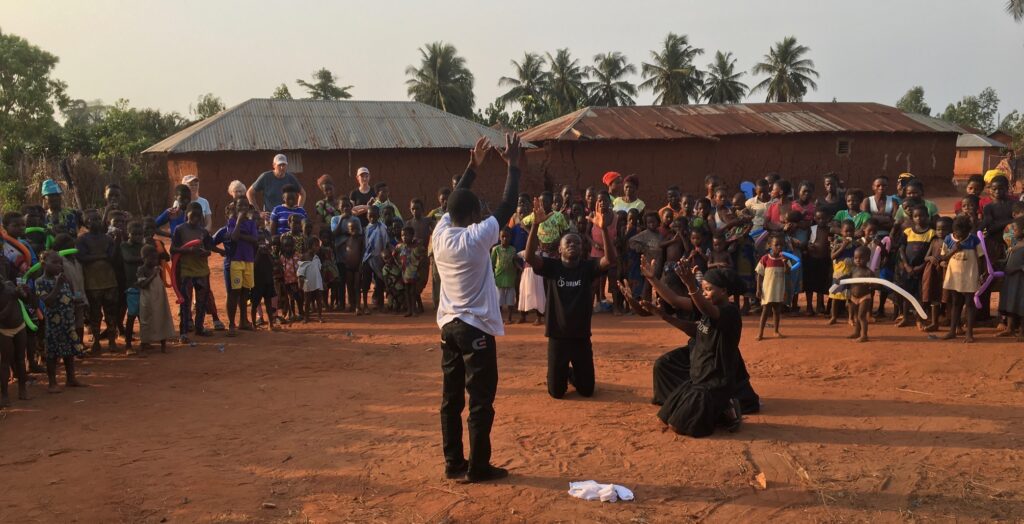
The last event of the evening was the showing of the JESUS Film in the Fon language. The film is a dramatic depiction of the gospel of Luke that has been translation into over 1,000 languages. After the DRIME presentation and JESUS Film, several people indicated a decision to follow Jesus.
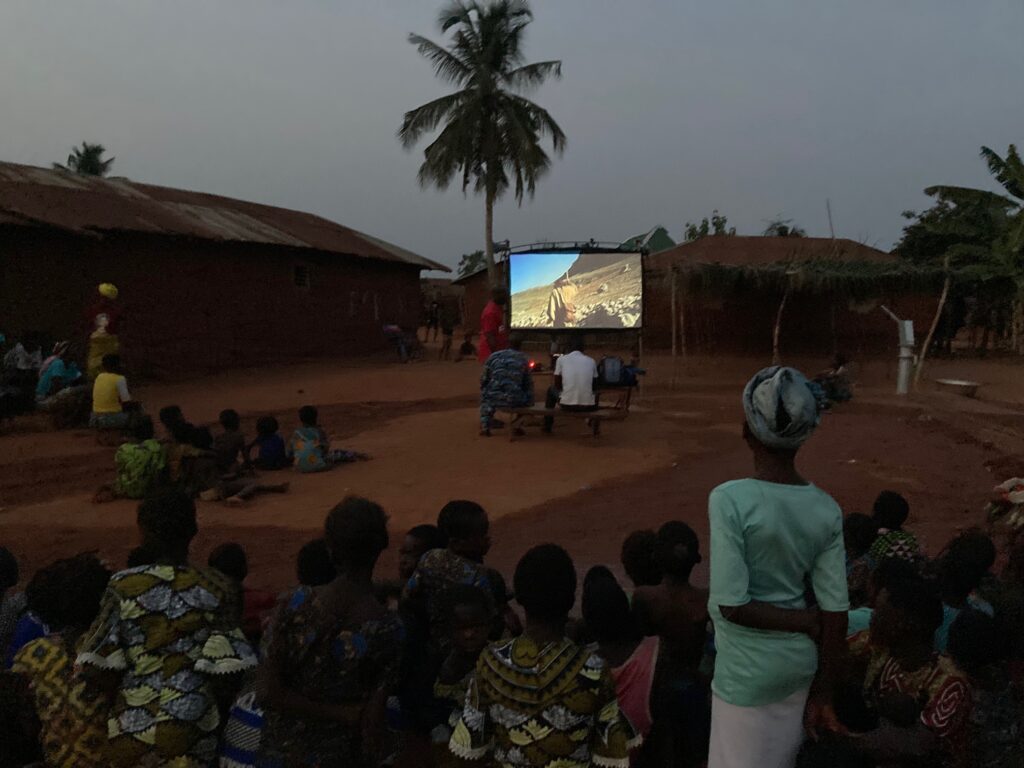
What a great day!
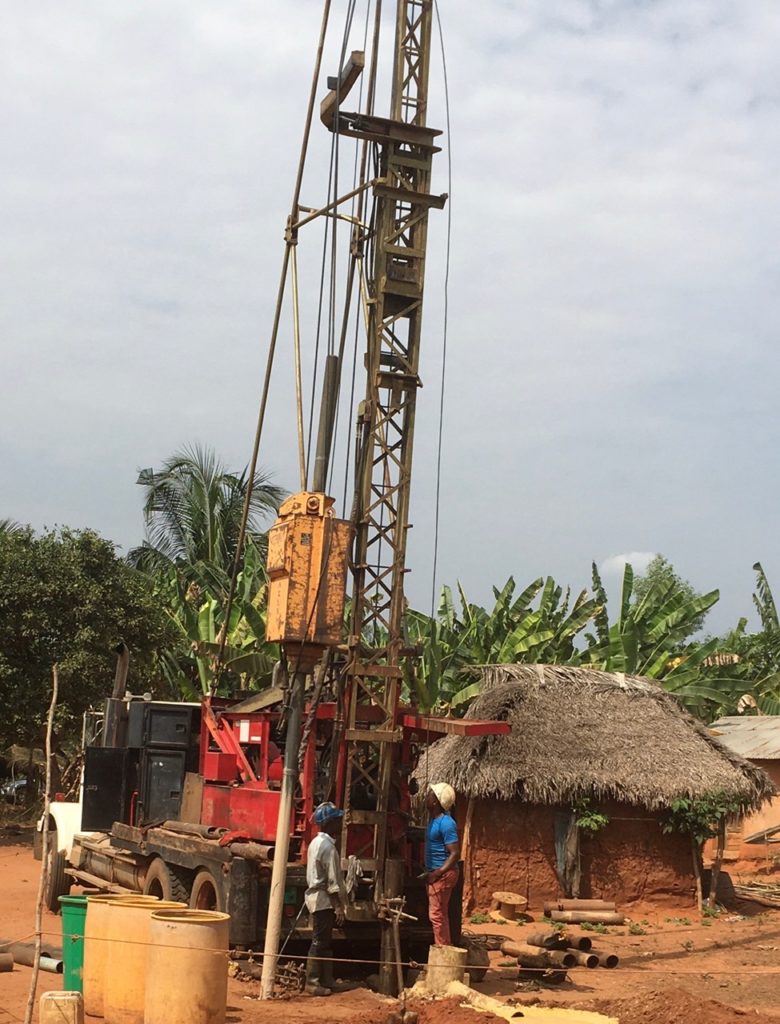
As you might guess, a key link in providing wells is the drilling rig and team. Today, the LIFE Team travelled to an active drilling site. It was about a two-hour drive over some roads that were more like a path than a road. It is hard to imagine how the drill rig managed the trip. Each village makes a commitment to provide housing and food for the drill team, security for the rig, and water for the drilling process. In this case, the closest water source is about 2/3 of a kilometer away.
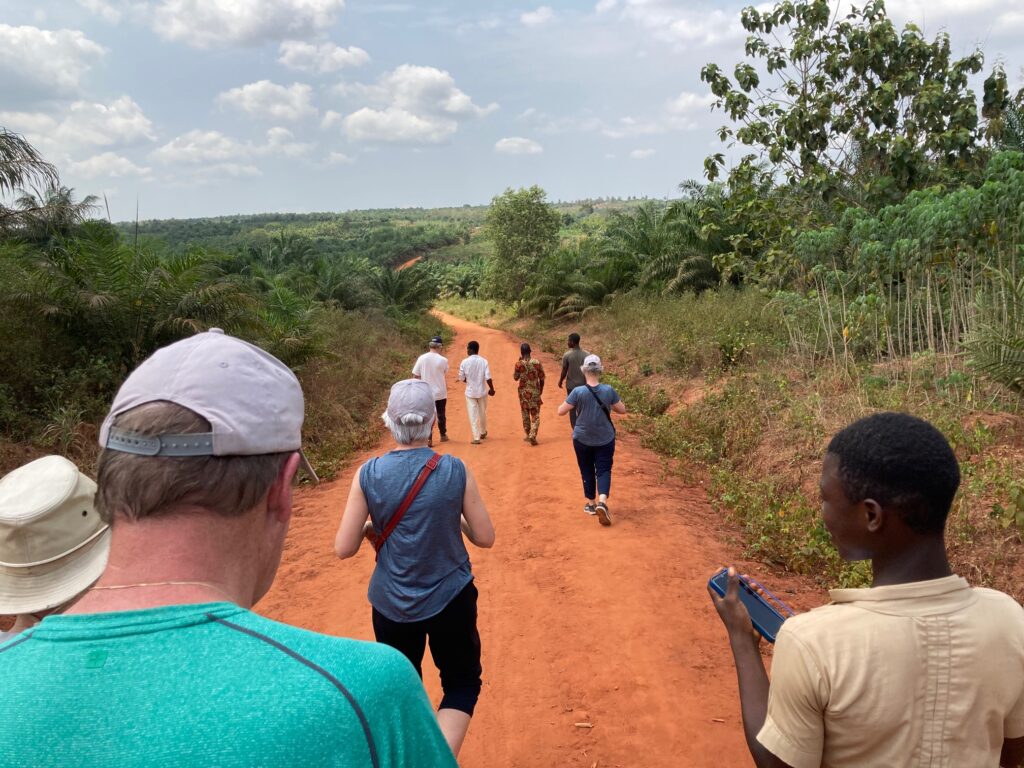
The team, guided by some of villagers, walked to the village water source. As you can see in this picture, a 5-gallon plastic container is being filled.
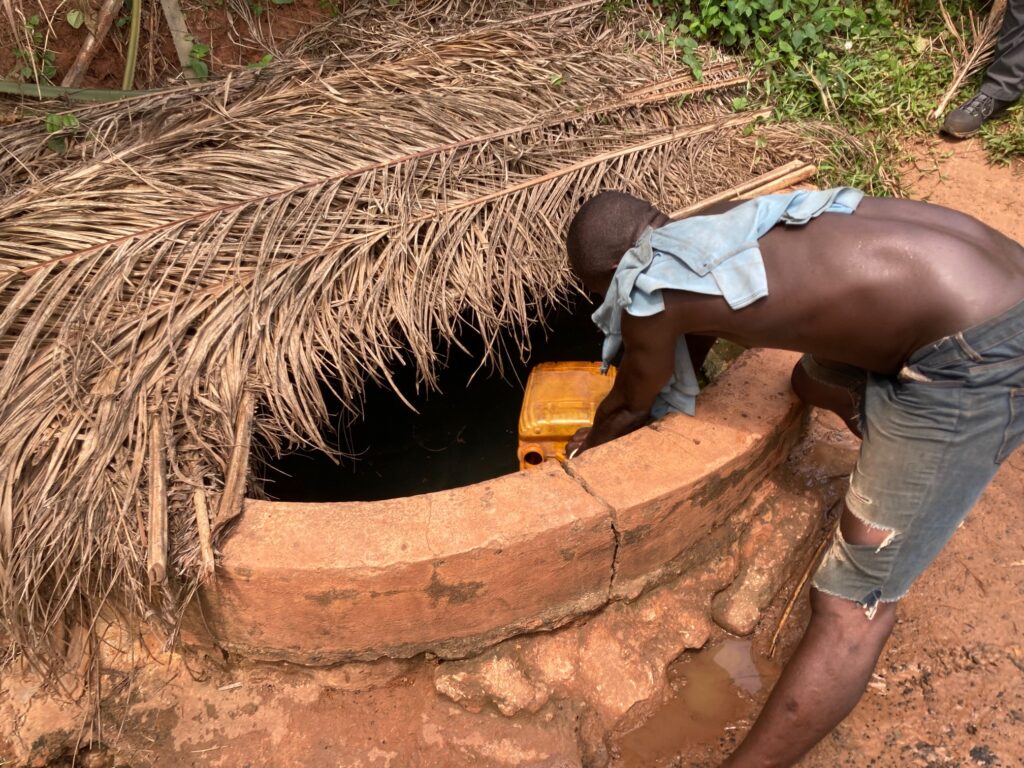
They left this site and travelled to another village that was even more remote to join the GAiN work crew and help with another pump pad. The LIFE Team was far more efficient after the experience on day two. As they drove to this site, the team noticed an increased number of symbols connected to Voodoo activity.
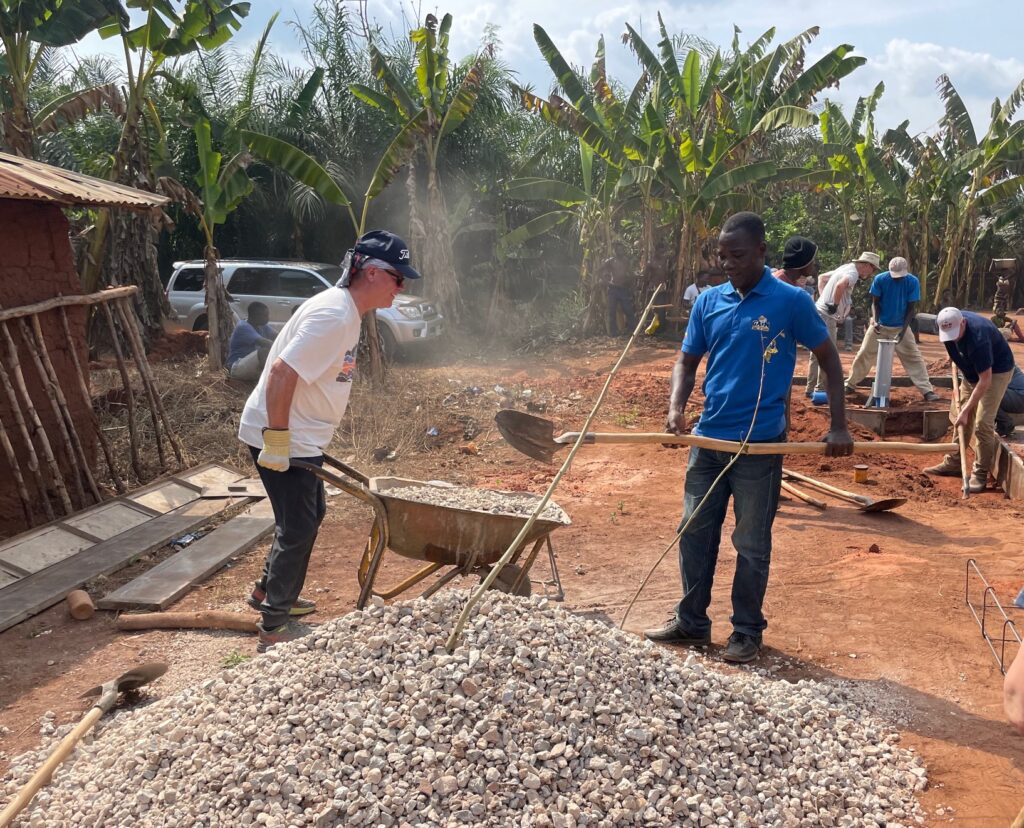
This community also has a population of just under 400 with no existing church presence. Their current water source is three km away. The anticipation for the well may explain why the team had a constant group of spectators. Plus, in this remote area, the village may have never had foreign visitors.
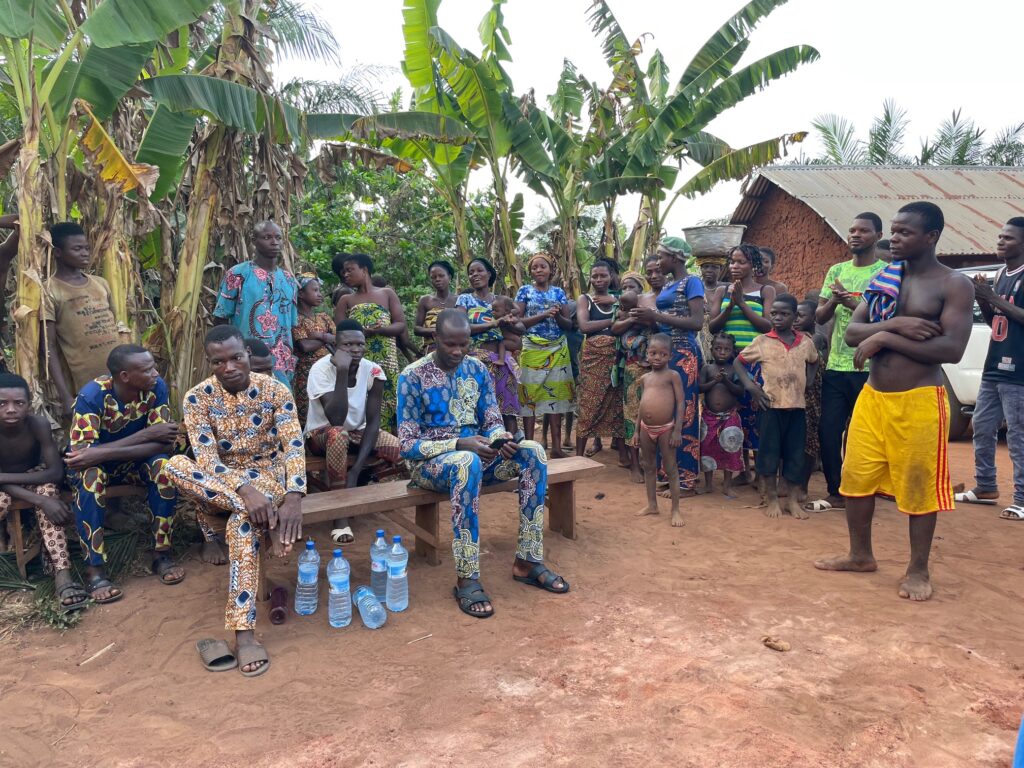
The finished work gets a date stamp and a prayer of dedication.
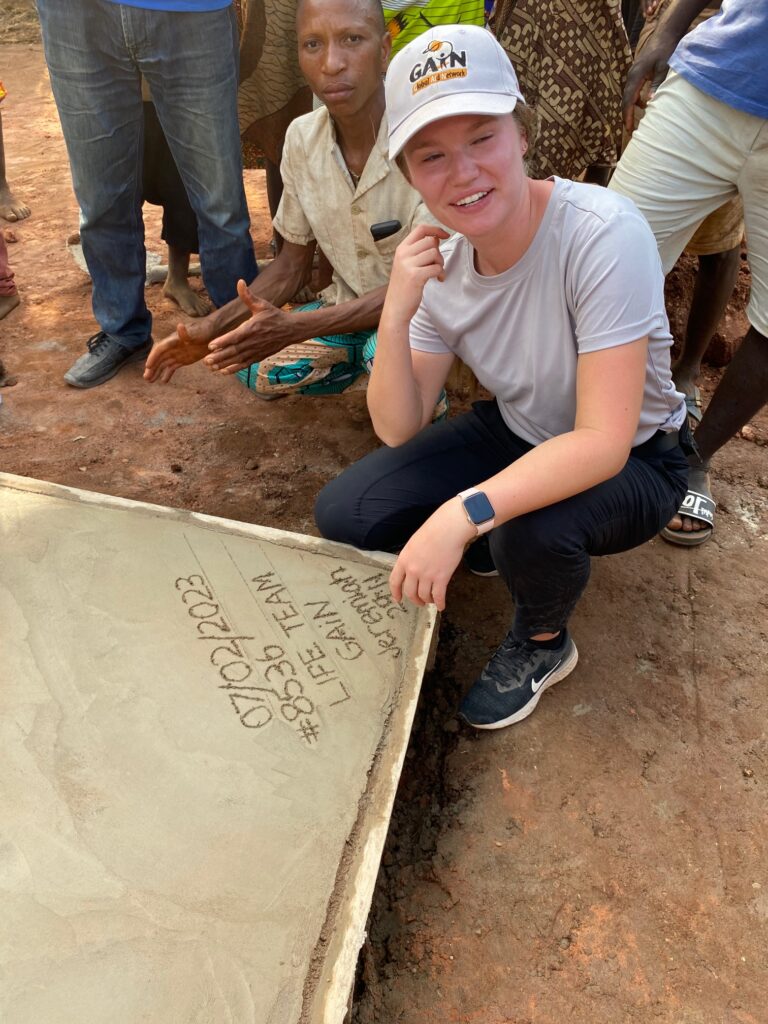
As the team traveled to this village, they passed through rich agricultural lands with pineapple, palm groves and our first sighting of cattle. Here are a few photos:
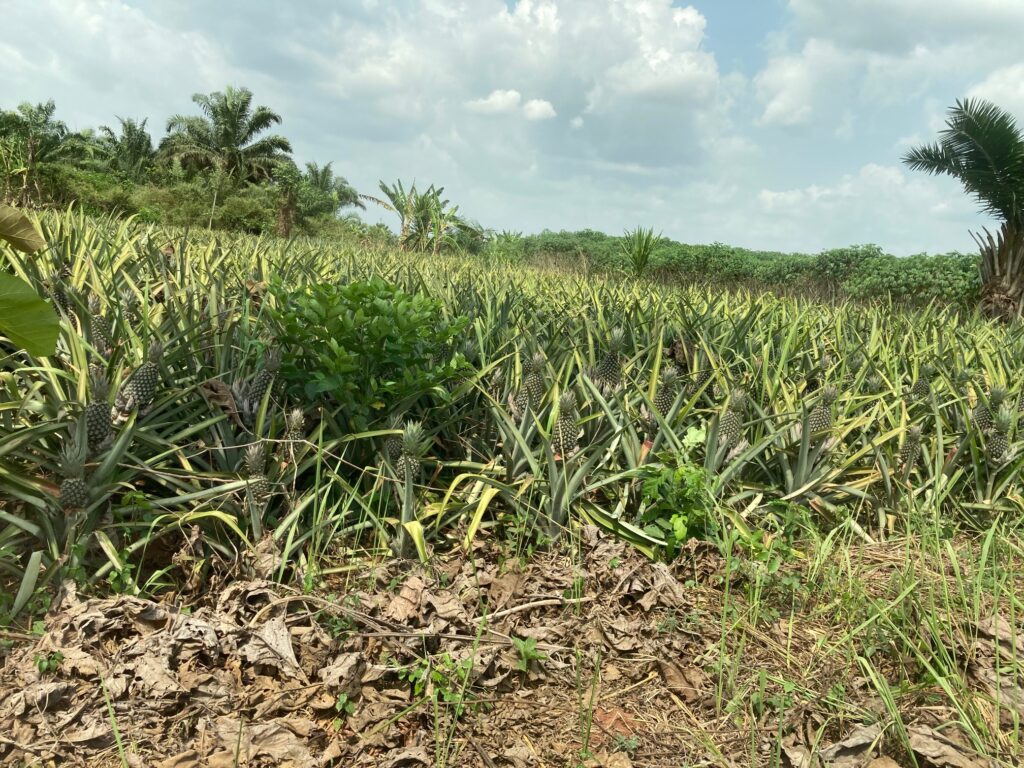
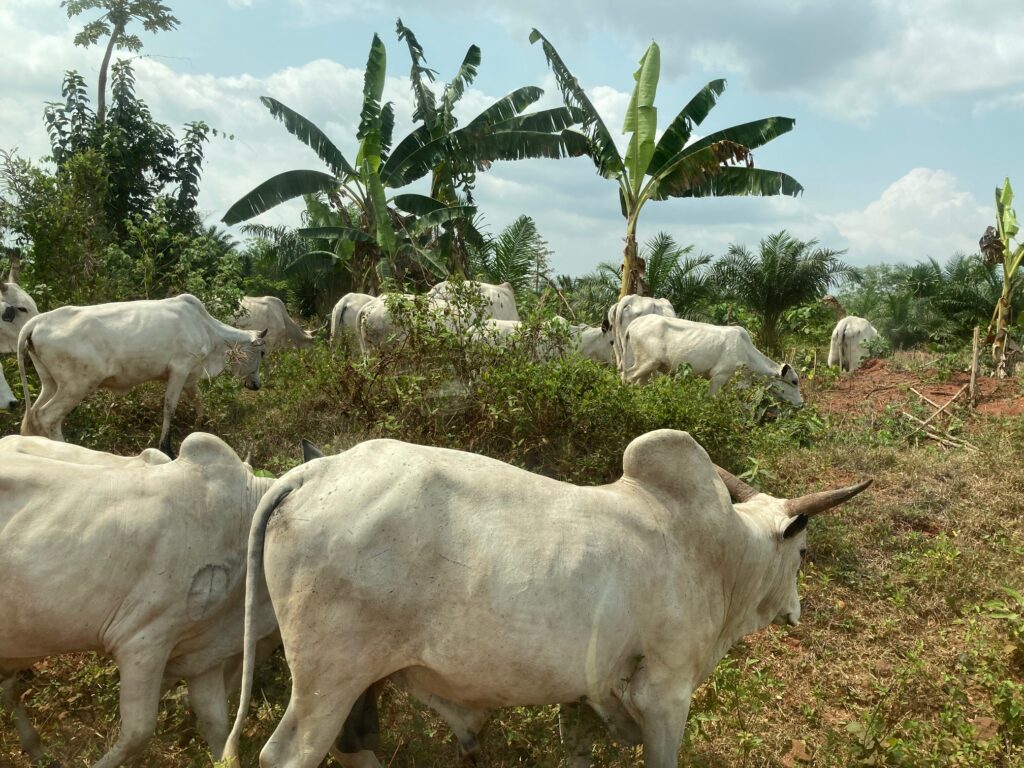
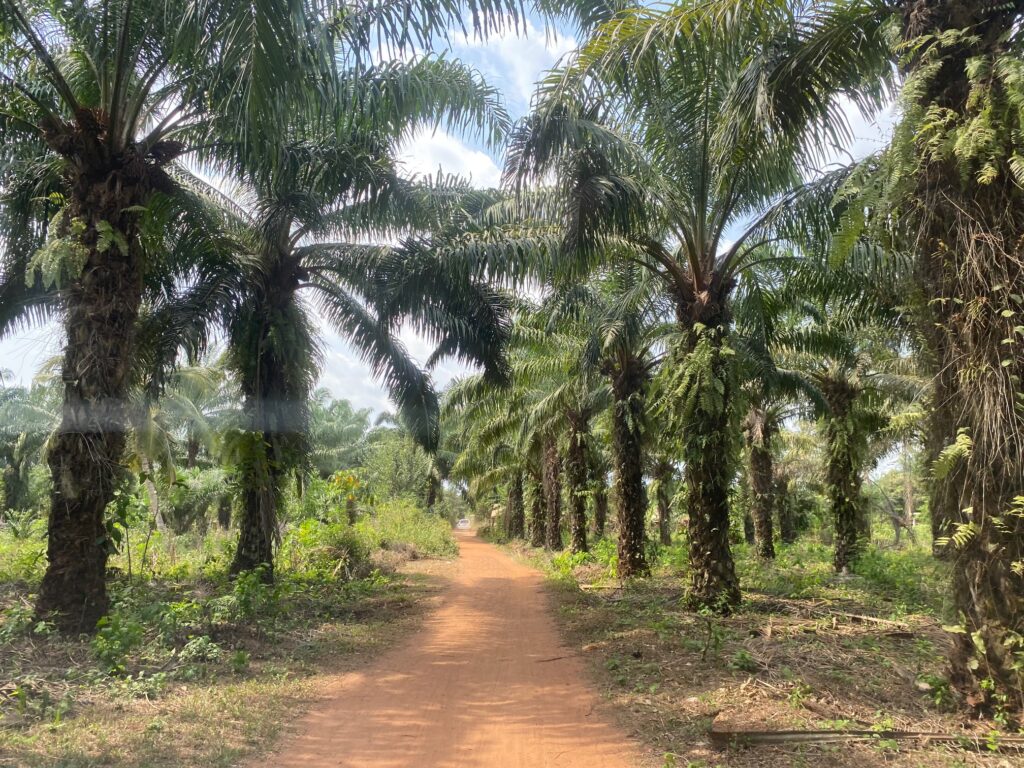
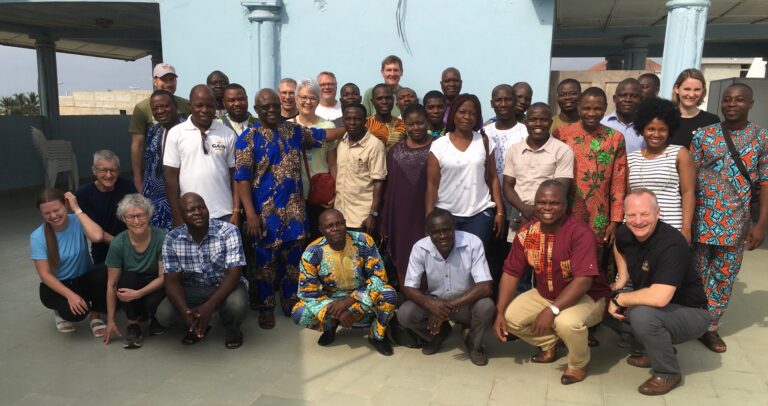
The LIFE Team’s day started with an introduction to the GAiN Benin staff team. GAiN was launched in Benin by GAiN Canada in 2005 and has since resulted in 1,756 wells. Through the local church, GAiN has helped build 591 village churches, and in rural Benin, 25% of the of the population are drinking water from wells provided by GAiN!

It’s one thing to hear numbers and quite another to see first hand what is happening. The LIFE Team visited two villages today. The first was a village where the well was provided in 2016. This particular well was a memorial to a woman named Helena. It is significant that the legacy of this woman has provided live-giving water for the past seven years!
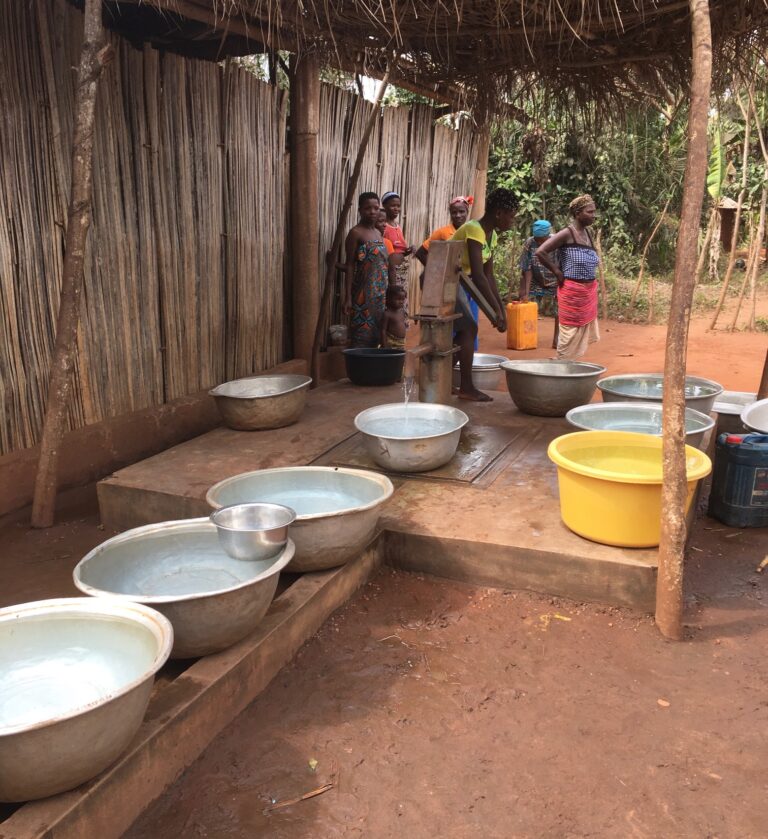
When the team first arrived, women were lined up to fill their large bowls with water. The team took turns pumping to help fill their bowls, and the women enjoyed watching their efforts.
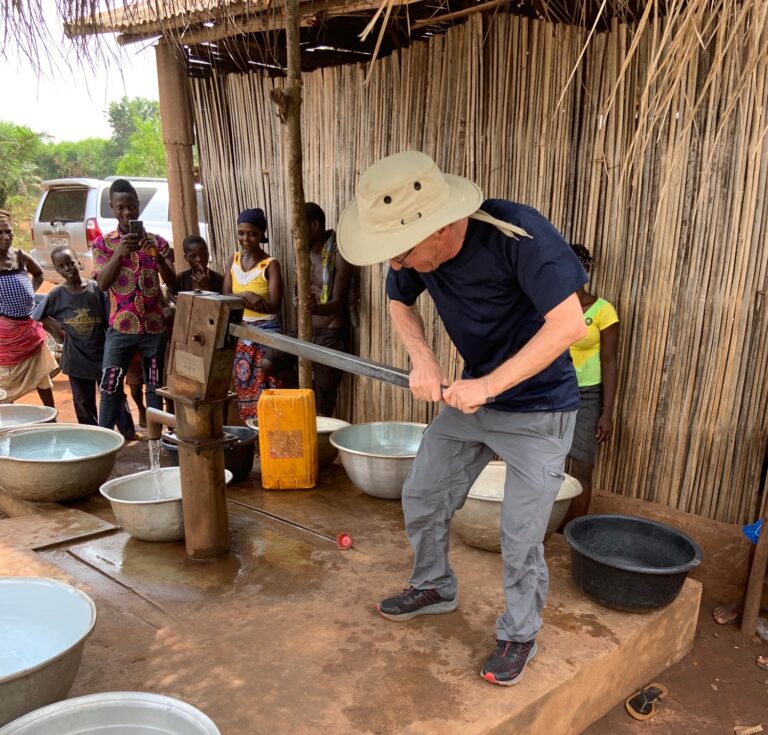
It was truly amazing to watch the women leave carrying the water on their heads. They sang a song as a way to share their appreciation. An elder from the village told us that before this well they had to travel 15 km for water!

The second village had a 72 meter well with a hand pump, but the work of pumping from that depth was difficult. GAiN provided a storage tower and solar panel to serve this village.
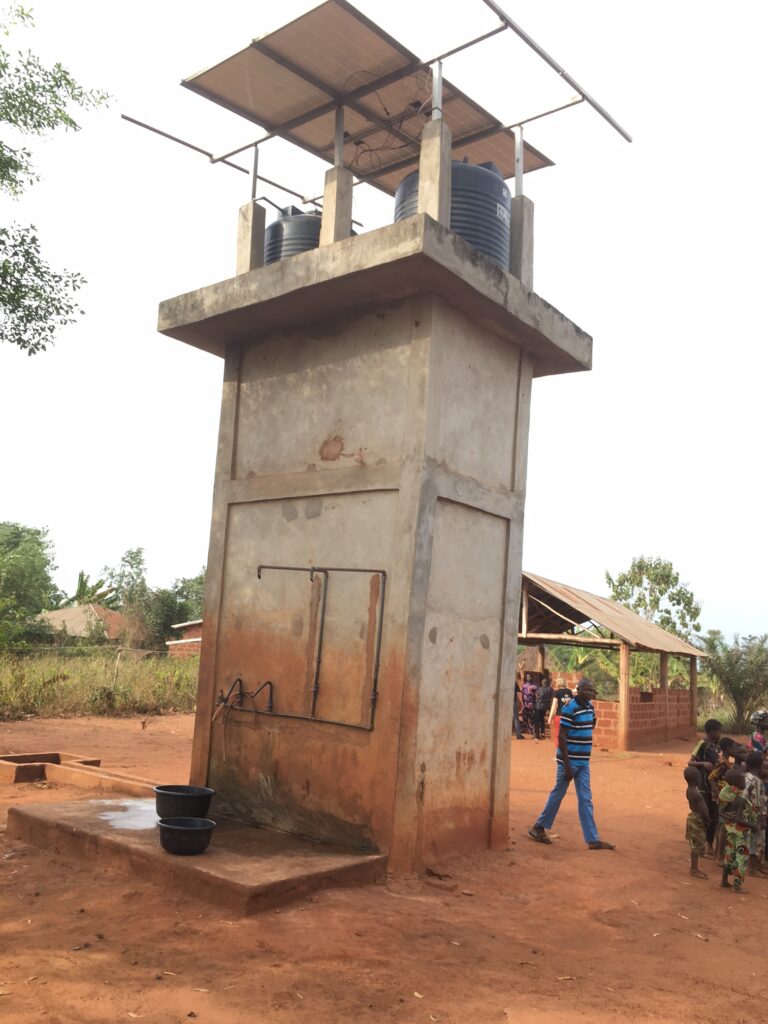
There was steady stream of women and children coming to get water. They lingered and enjoyed conversations and questions, thanks to some translation. To express appreciation, the team was given a bag of oranges and pineapples. Benin is an agricultural country with agricultural products as their main export.
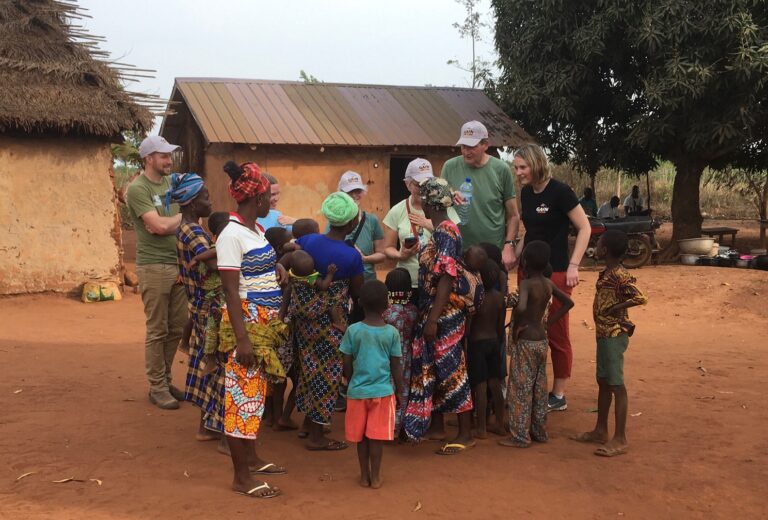
What an incredible experience to see the results of kindness and generosity of so many Canadians who have given to the work in this country. Clean water saves lives and transforms communities! Here’s one last photo.
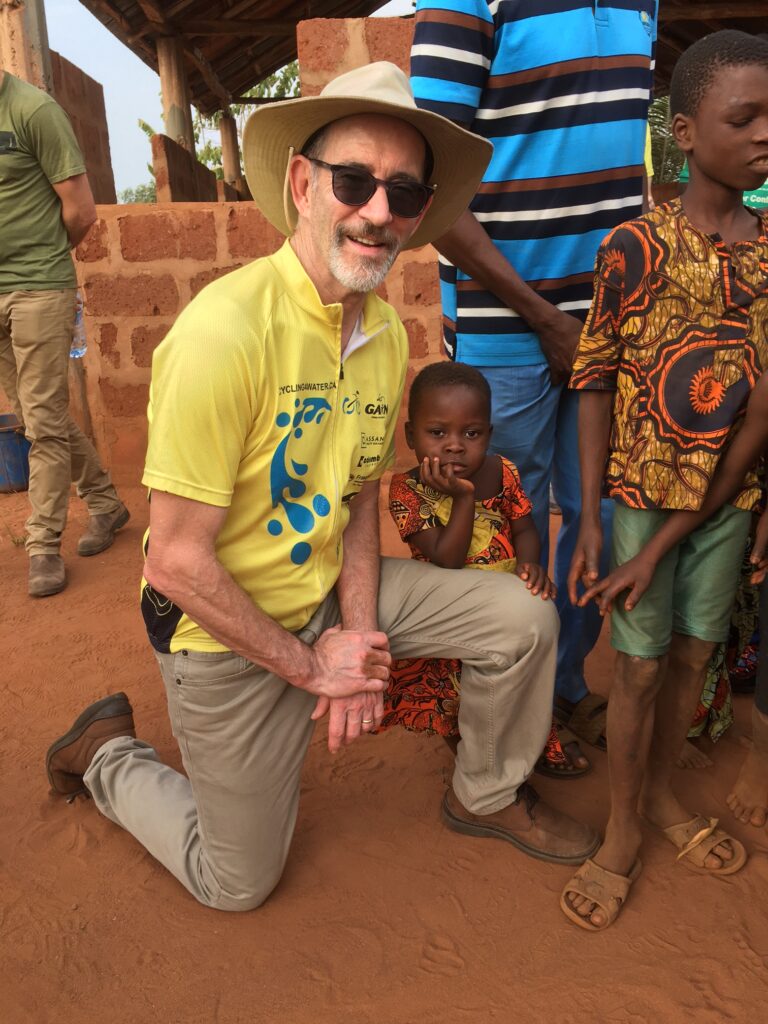
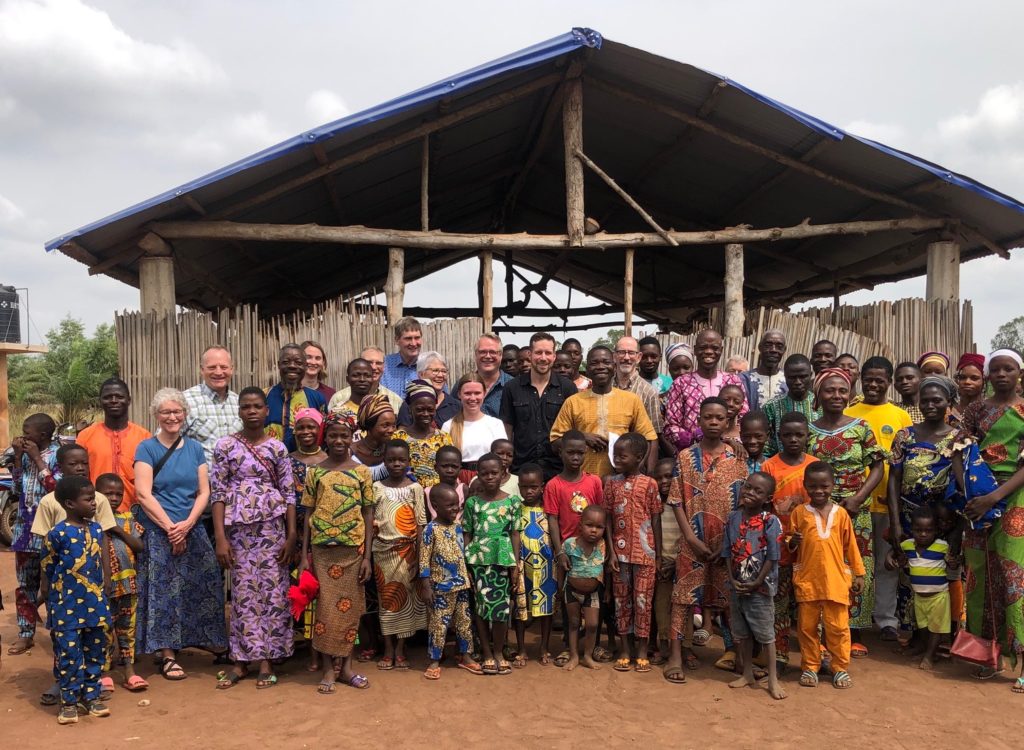
Today, the Benin LIFE Team visited a church that was planted in conjunction with a well provided in 2019. The church members welcomed the team warmly. Rob, one of the team members, gave the message in French and then it was translated into the local language which is Fon.

Colorful and energetic are two words that come to mind when others reflect on the service. Worship was filled with drums, dance, songs and responsive prayer. The people brighten the very simple worship center with their colorful clothing and joyful worship.
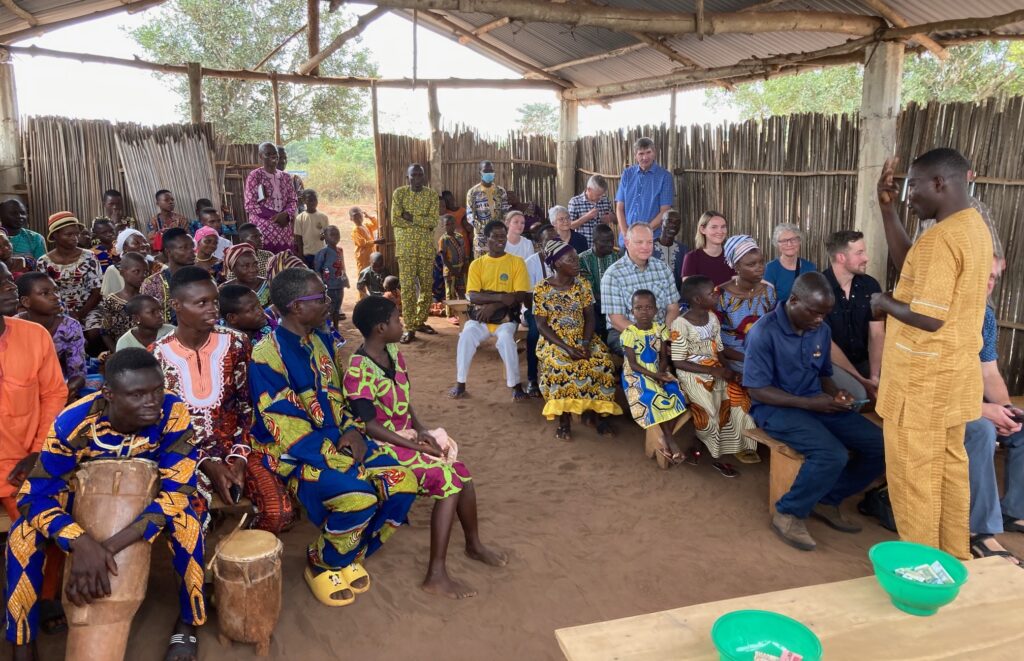
After the sermon, the pastor expressed his appreciation for the LIFE Team’s visit and for the blessing of clean water. He then invited each of them to share why we came to Benin and about themselves. It is clear that time is viewed in a different way here. This was a lengthy service, everyone was clearly enjoying the opportunity to hear their stories. Even the children listen and seem content to linger with their parents.
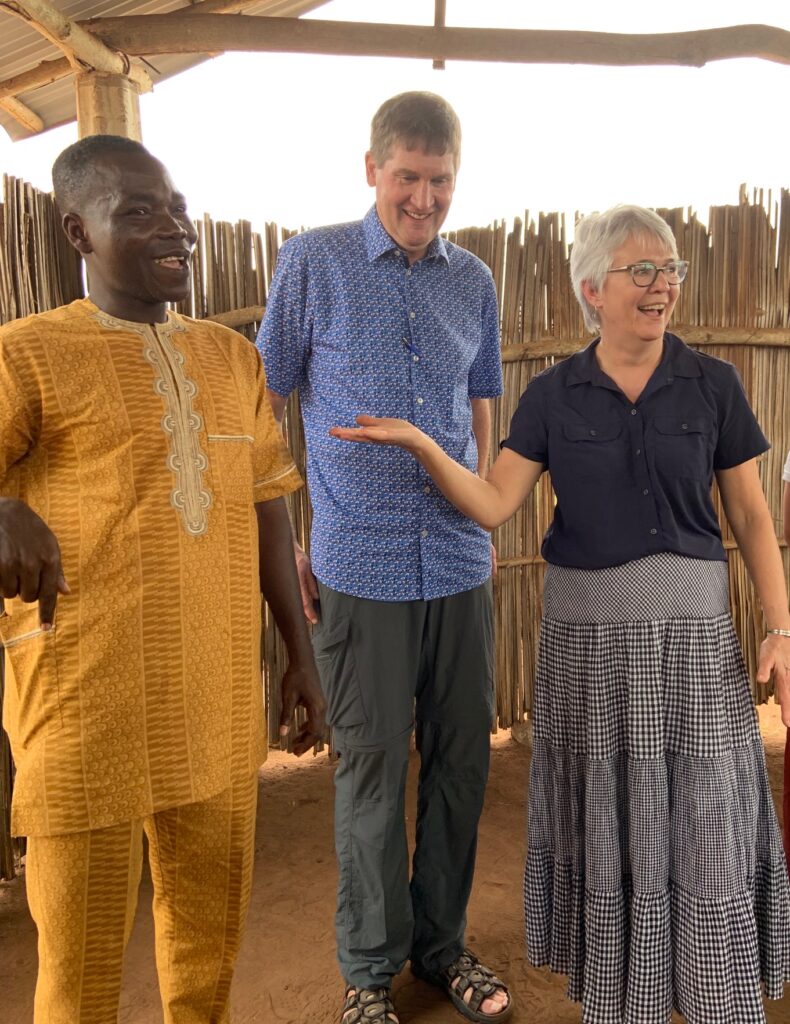
The well in this location is unique. Most of the wells in this area have hand pumps. This well is 67 meters/220 feet deep so an electric pump is needed to bring the water to the surface. The storage tank allows for the water to be stored and dispensed.
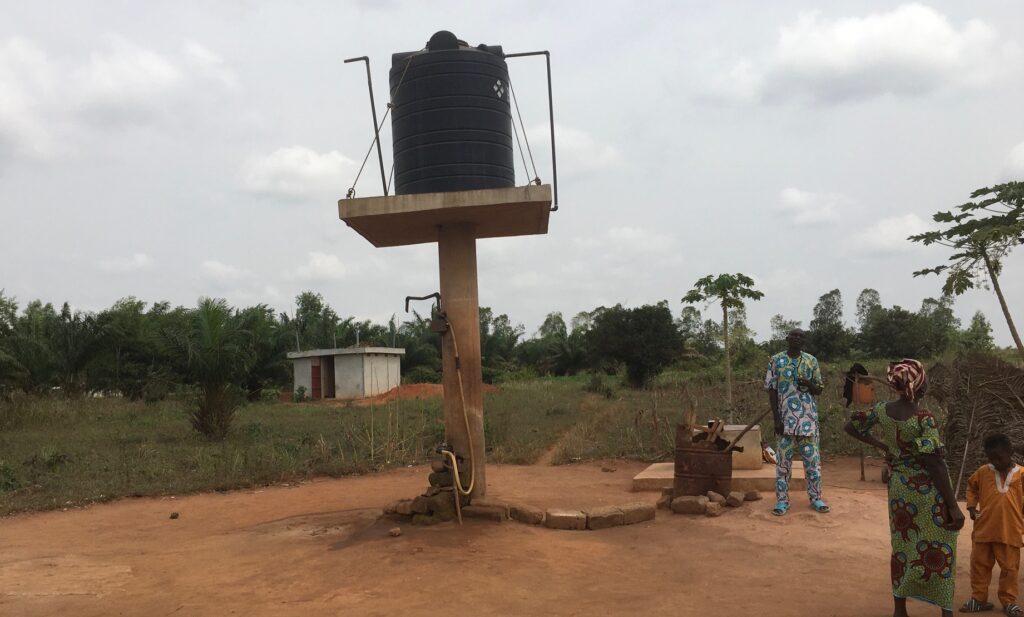
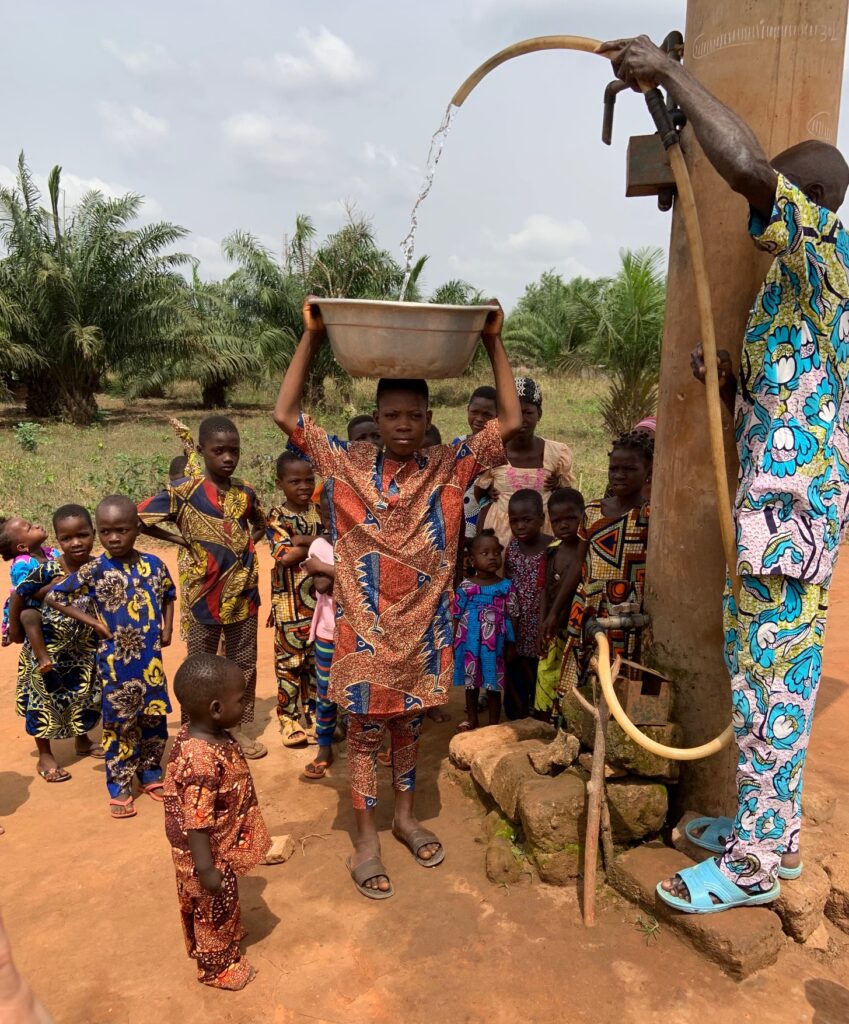
It was a wonderful day for the LIFE Team to catch glimpses of what a well has accomplished in a village; a clear illustration of the impact of clean water and the living water in this spot.
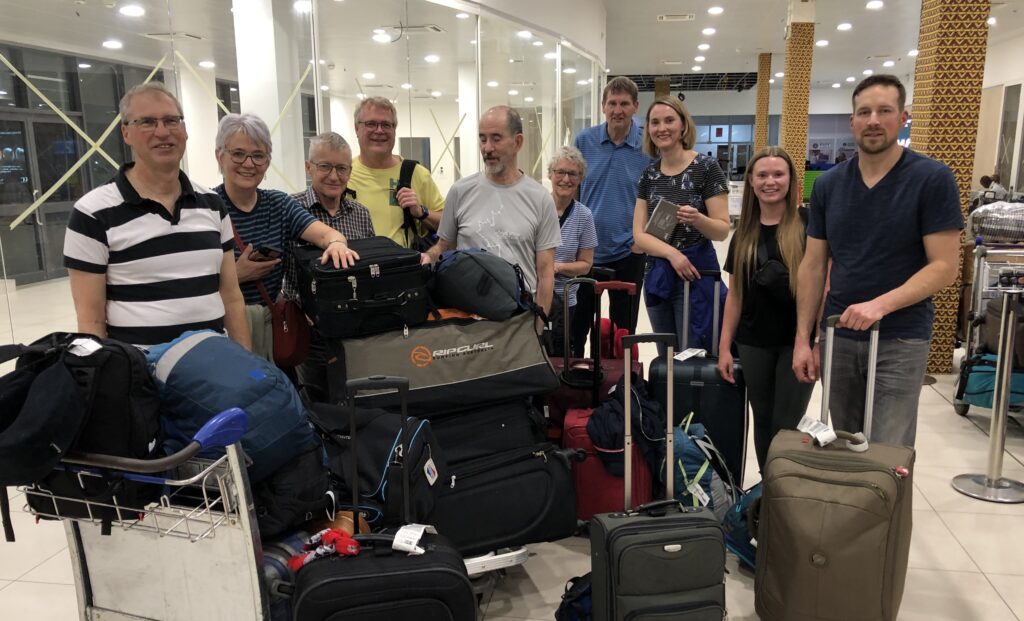
After 35 hours of travel, the LIFE Team arrived in Benin on February 3! The group of 11 consists of GAiN staff Lyndon and Monique, Cycling 4 Water team members Mike and Rob, as well as 7 others who support the work of GAiN.
The LIFE Team is travelling to different villages in Benin where they can interact with locals and be immersed in the environment. They will also experience the water crisis first-hand as well as see the impact that clean water and the message of the gospel can have on villages.
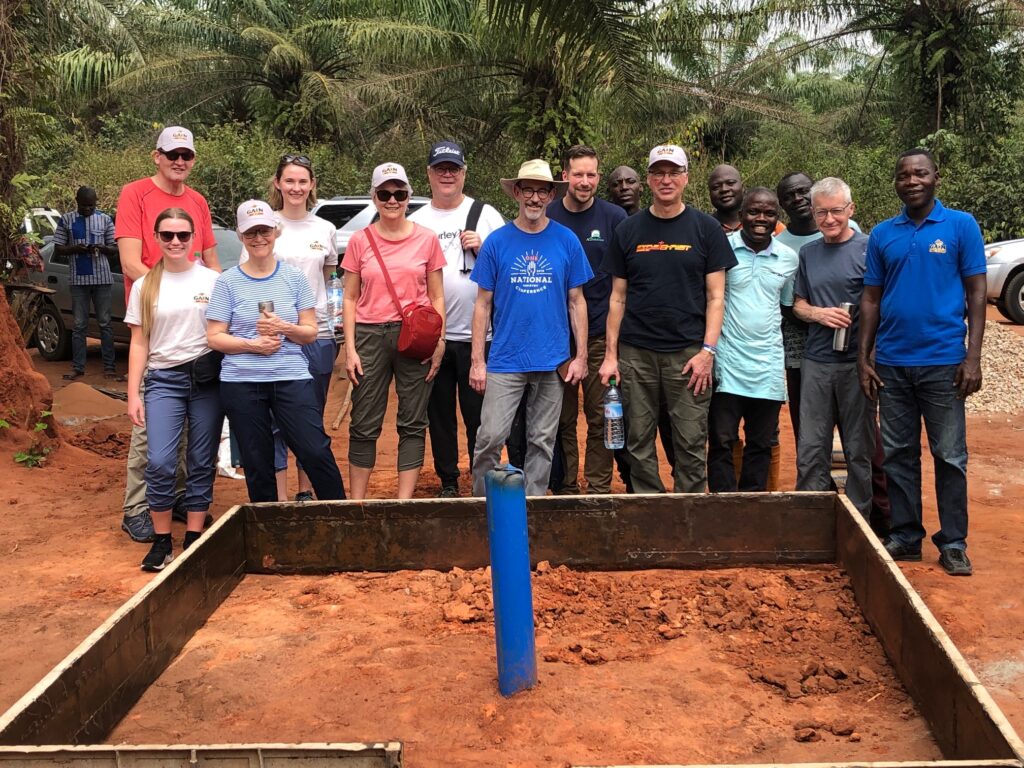
Mike, one of the team members from Cycling 4 Water, wrote an update on their first day in Benin:
After what felt like a very short night of sleep, breakfast and orientation, we joined the Benin GAiN team to build the well pad in a village outside the city of Cotonou. Leaving the highway, we turned onto a dirt road which became progressively more path like along the way. It almost seemed impossible that this village of mostly thatched roofed huts could exist so close to the modern city of Cotonou. Our task was outlined by the well pad forms positioned around the well casing.
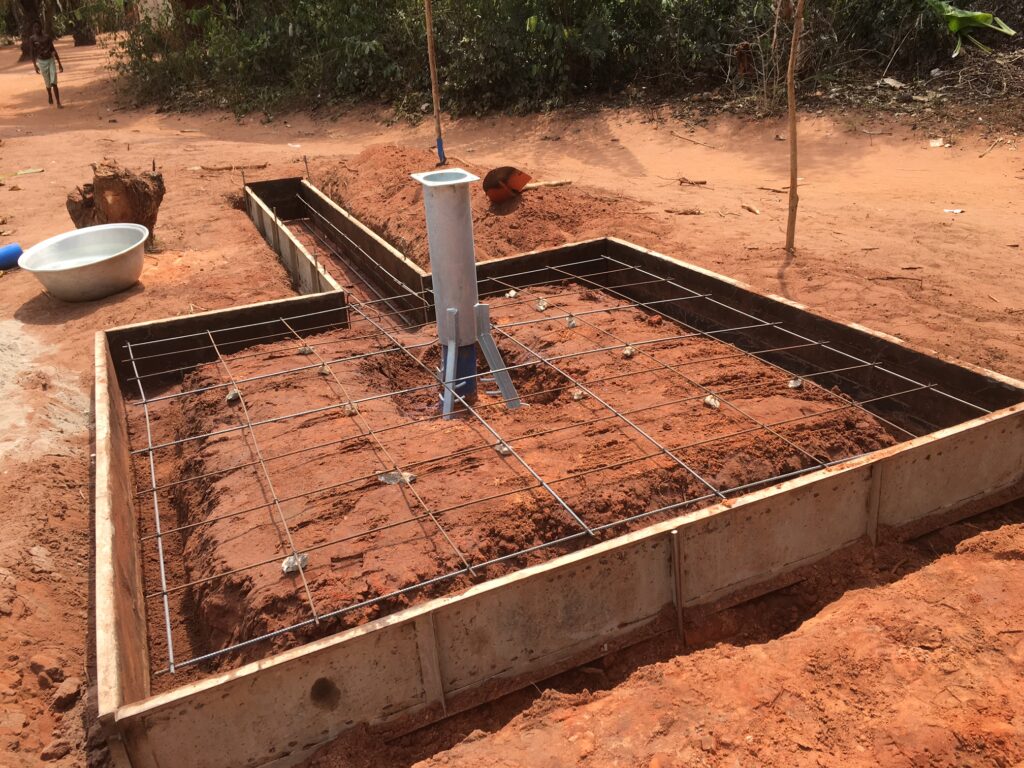
Our GAiN crew quickly divided us into groups with specific assignments, which included preparing the rebar, mixing the sand, gravel and cement, and setting the forms into position. The cement was prepared with nothing other than shovels on the ground!
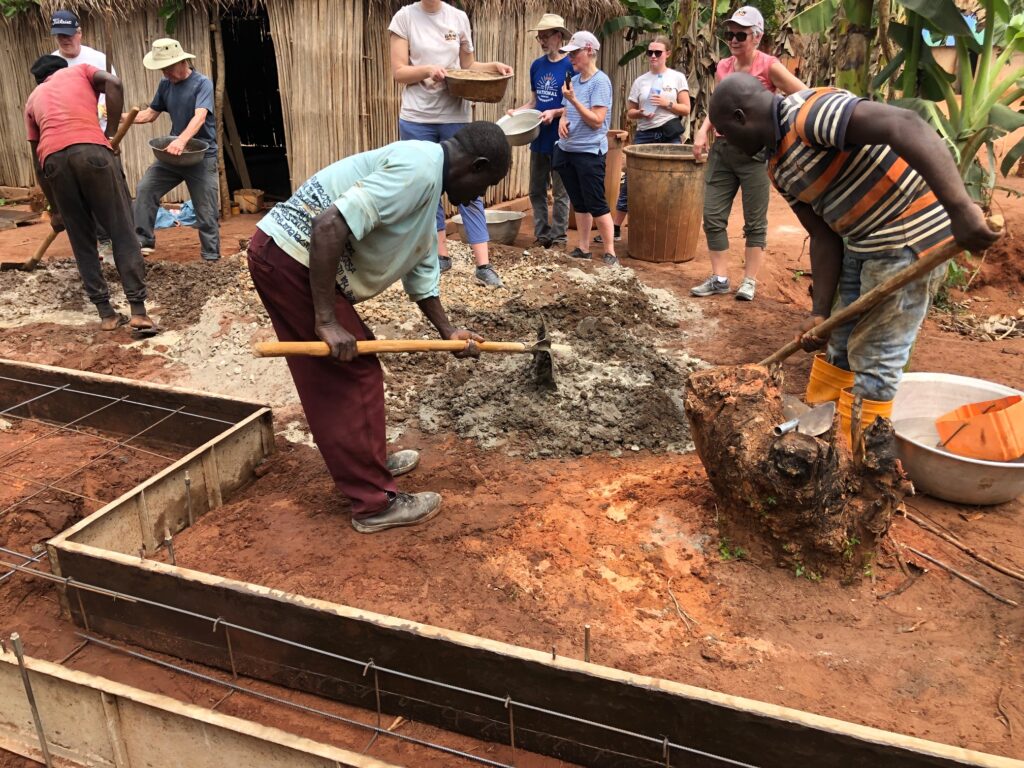
This was hard work especially since the temperature had passed the 30 degree mark and at least half of our Canadian team are age 65 plus. As the final touches were being added to the pump pad, some of the villagers assembled.
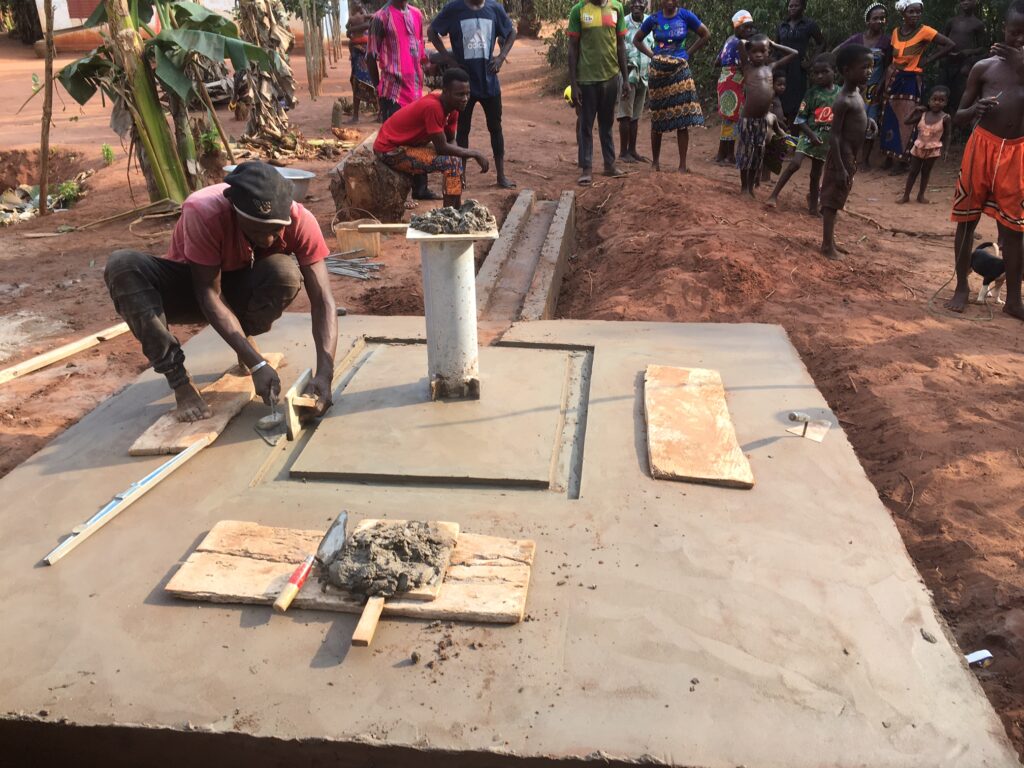
Singing led by the pastor’s wife created a joyful atmosphere filled with anticipation for the clean water this well would soon bring to the village of approximately 400 people.
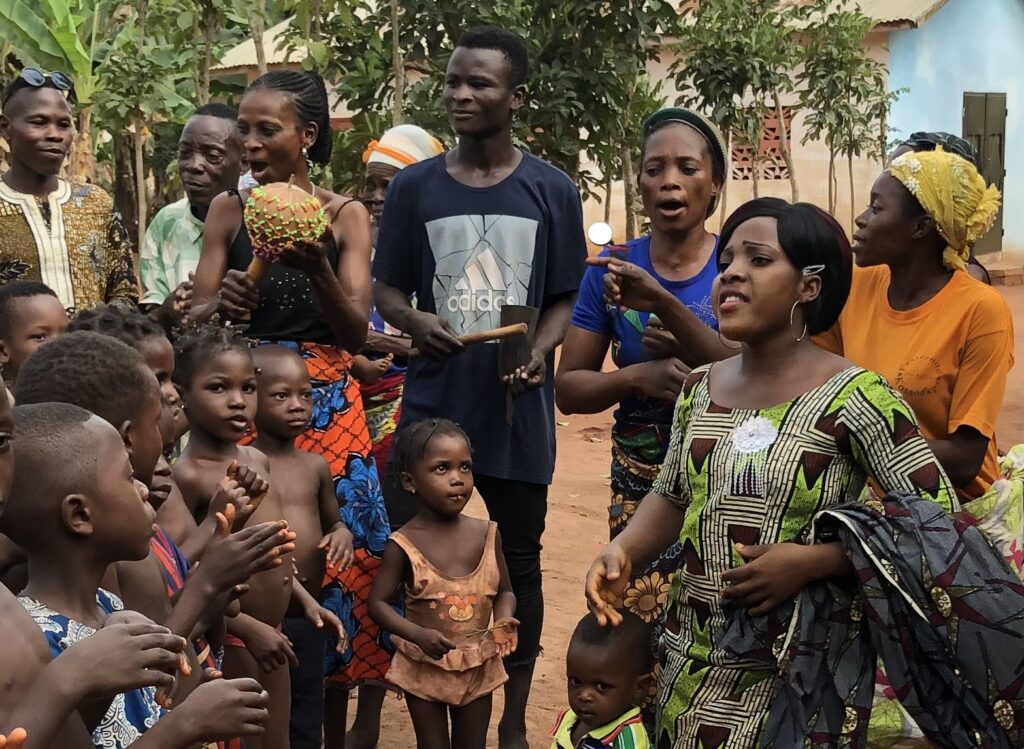
Yes, this was hard work but you may remember early on in the preparation for cycling we said the same thing: “Wow this will be hard but it would be a lot harder to watch your children die because they do not have clean water.”

